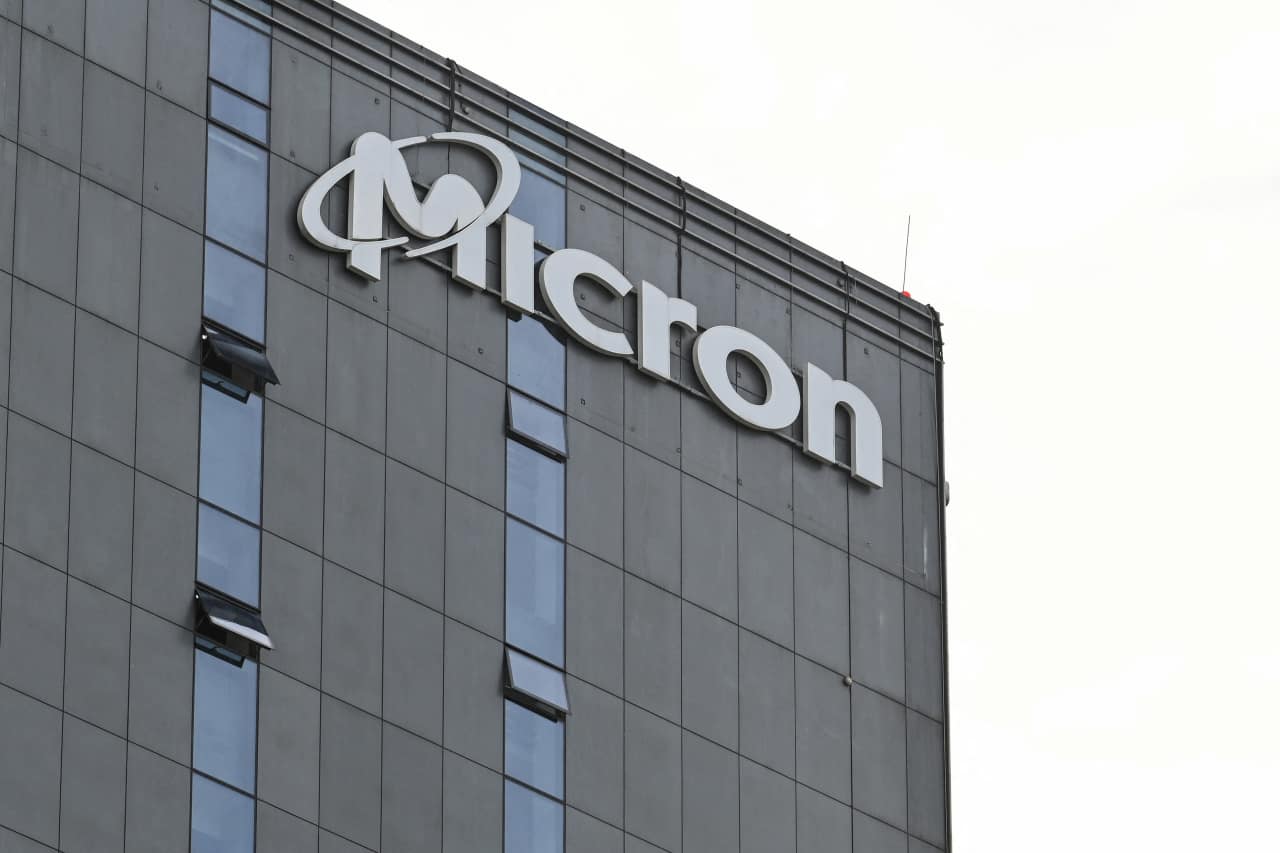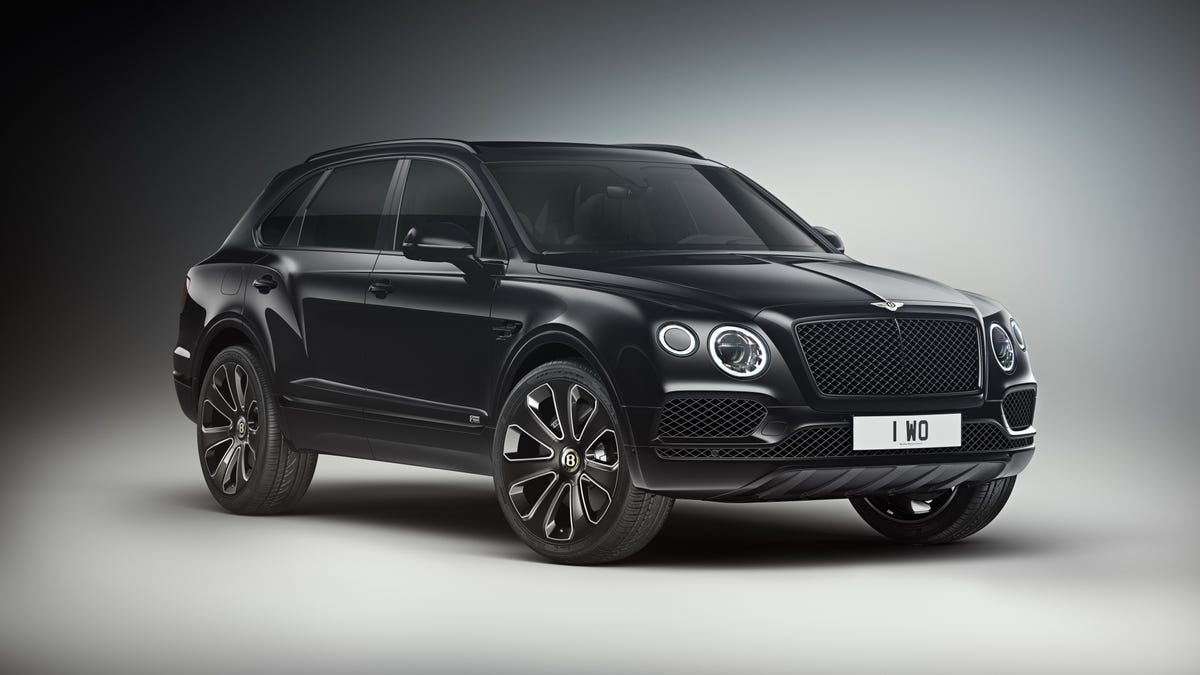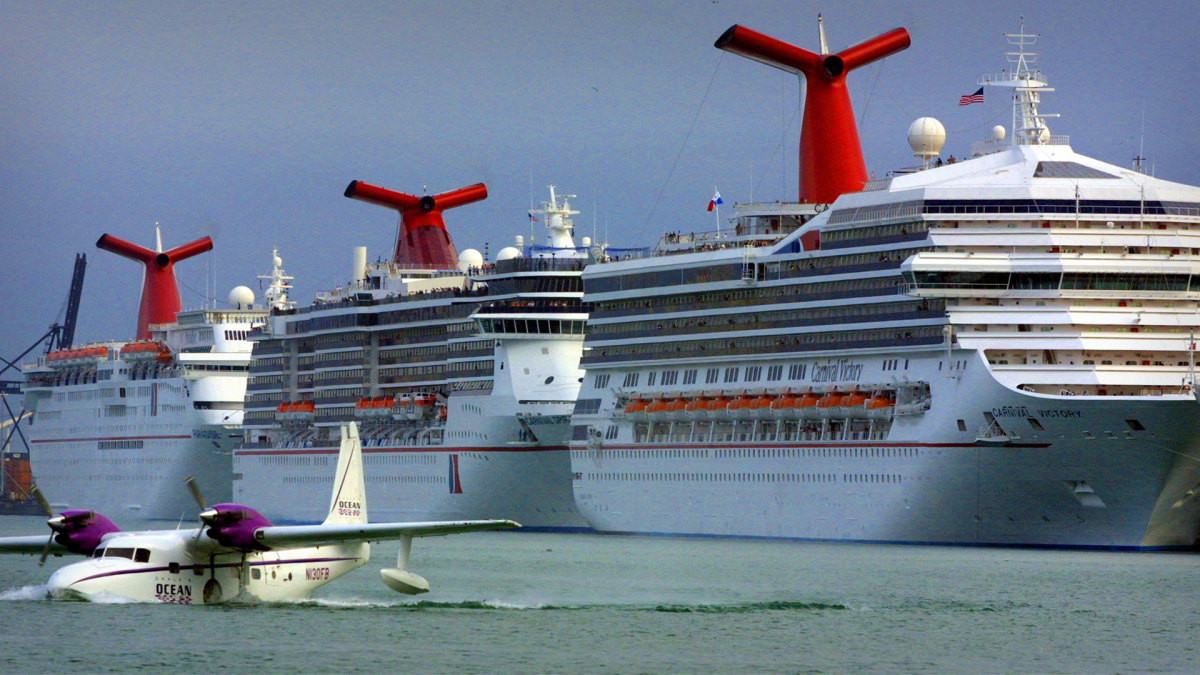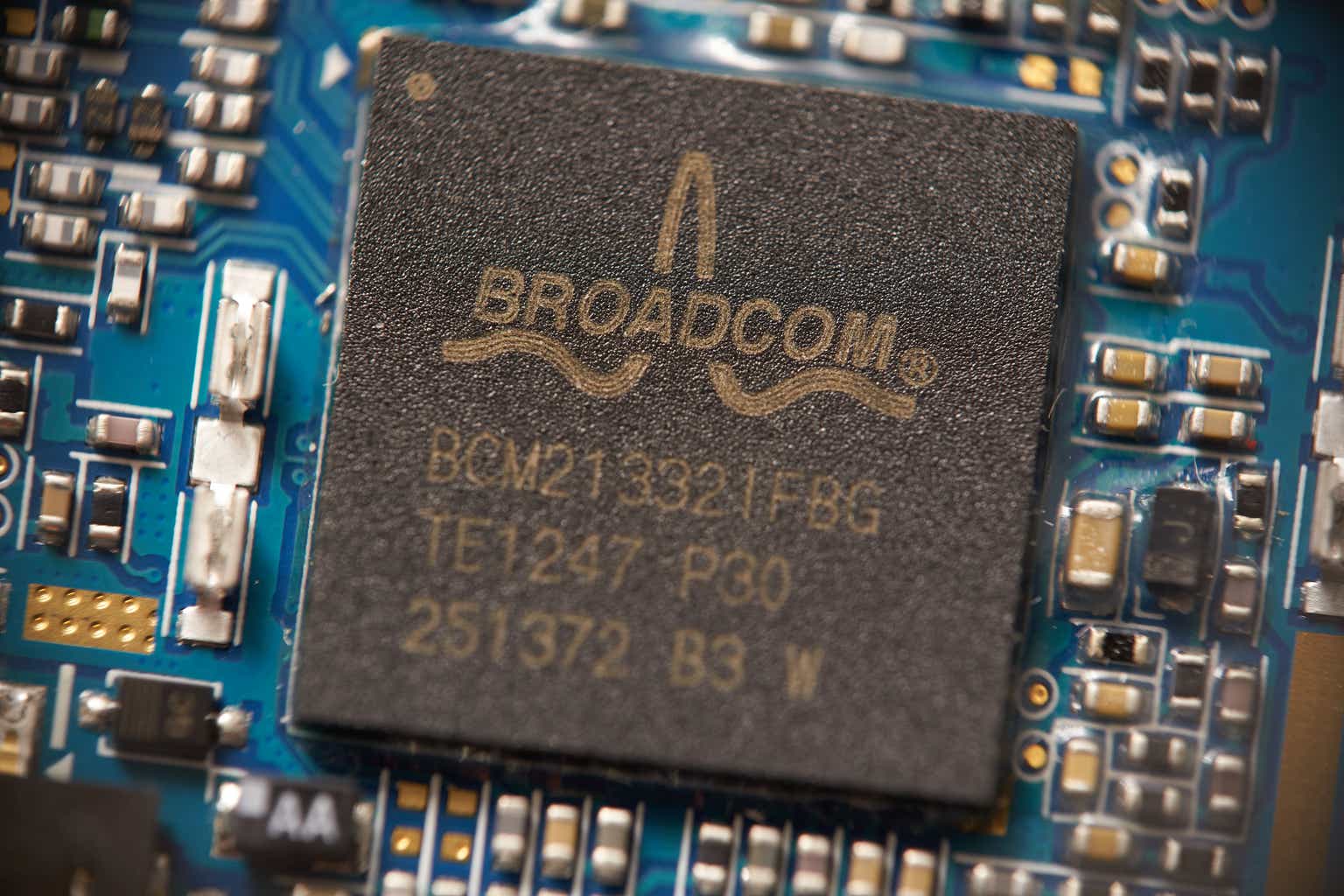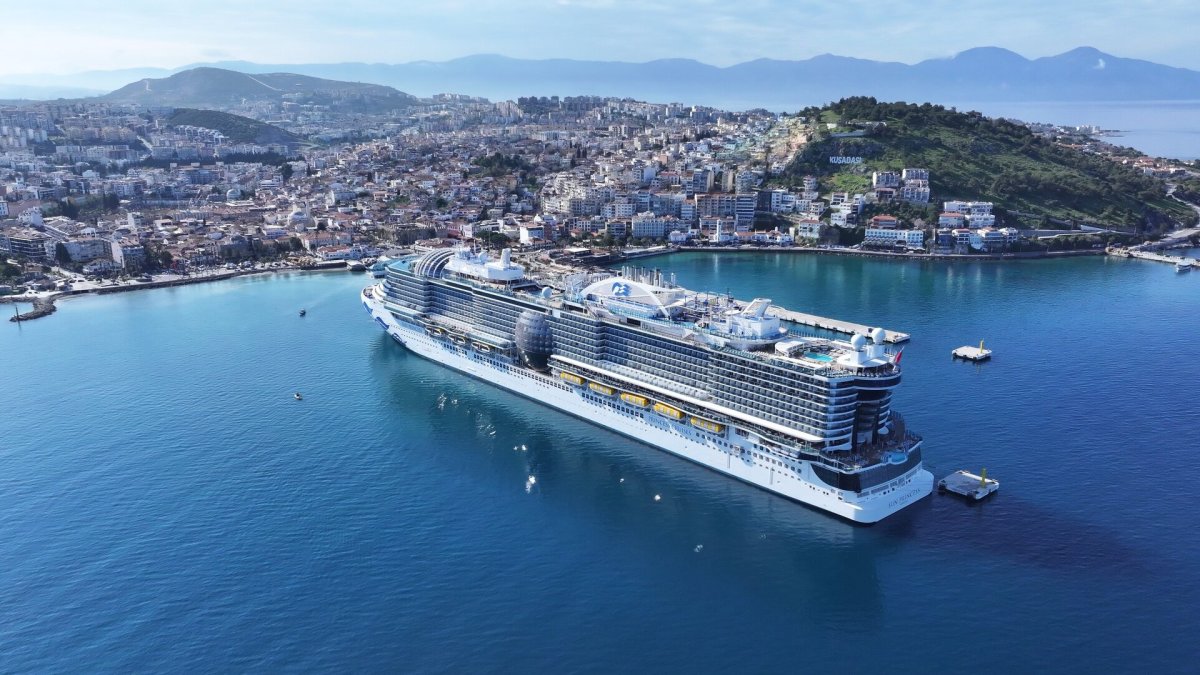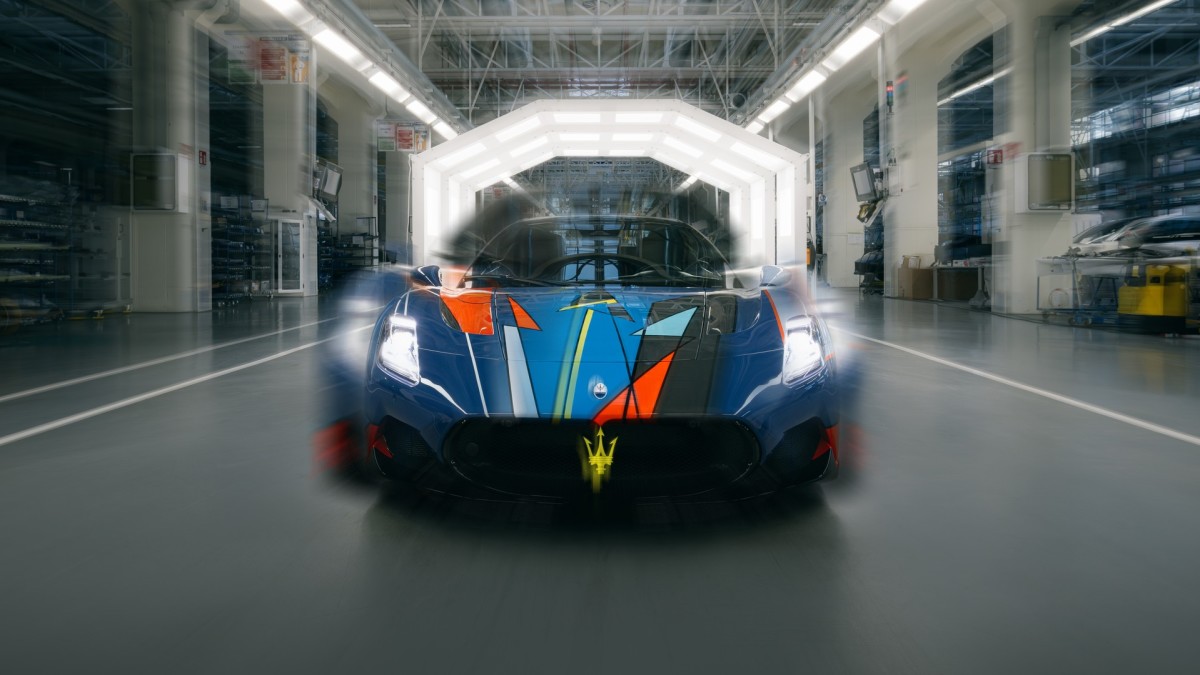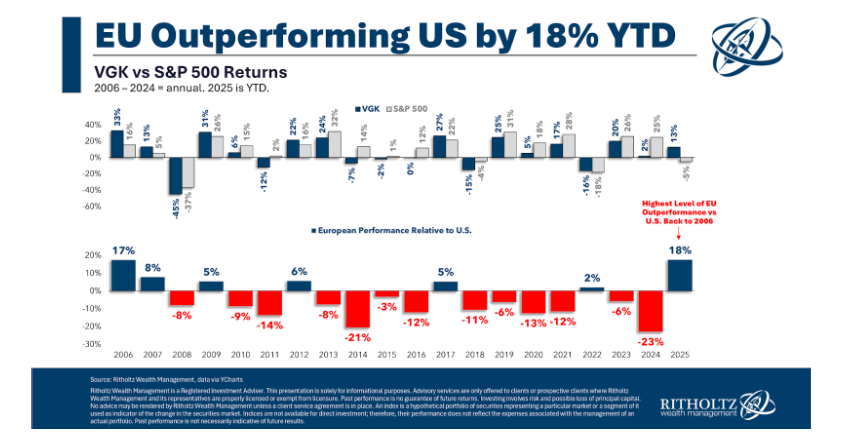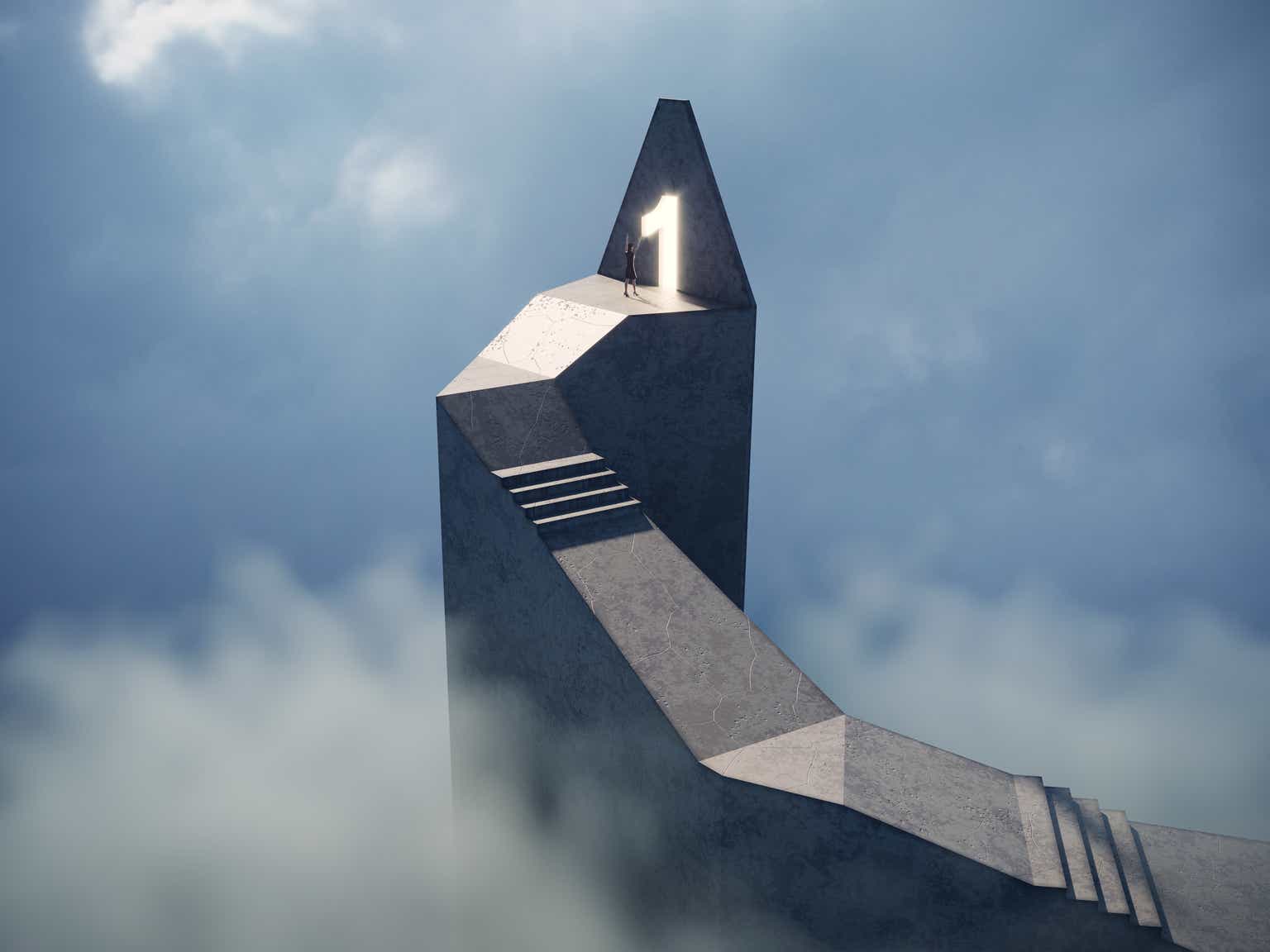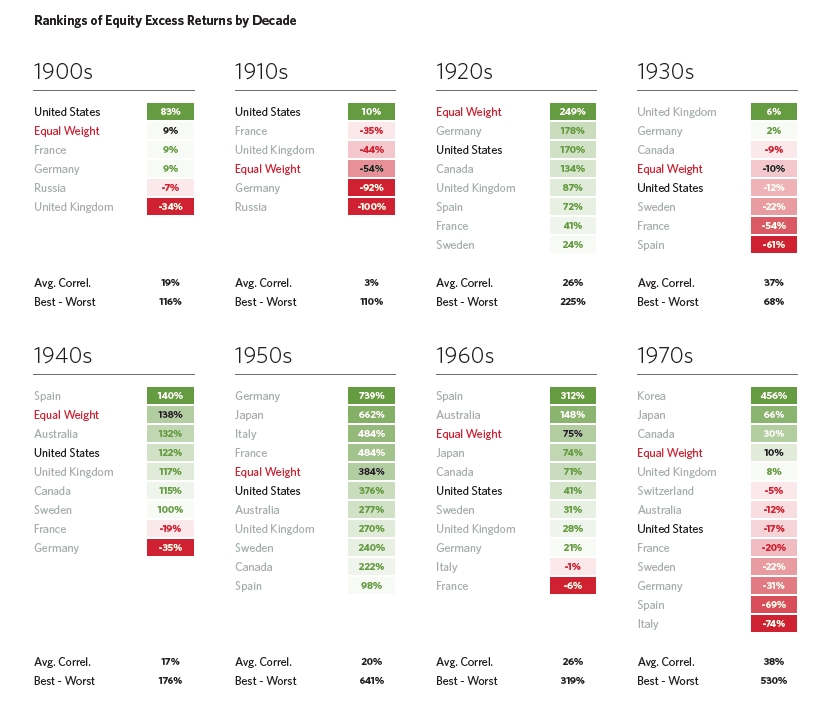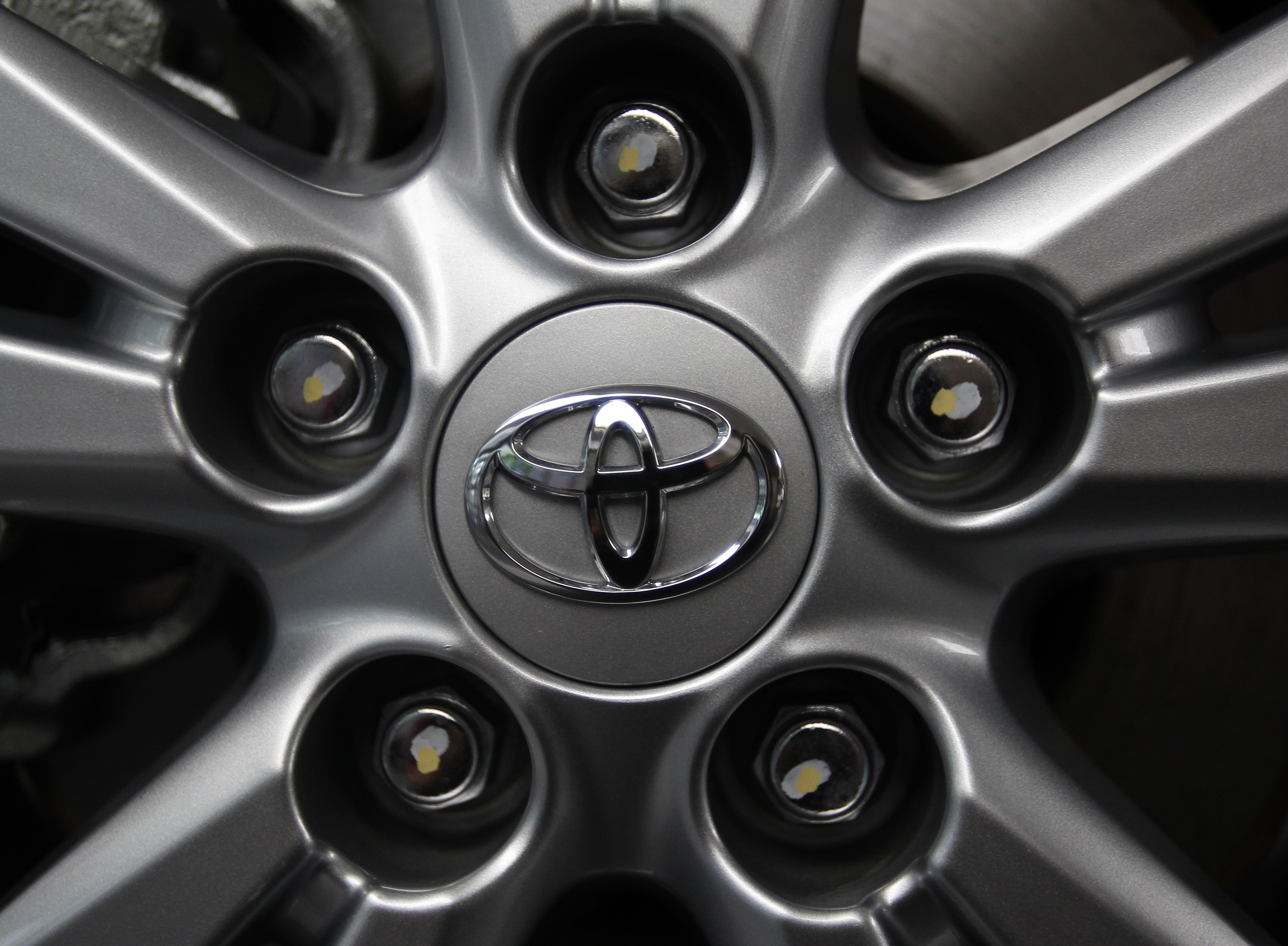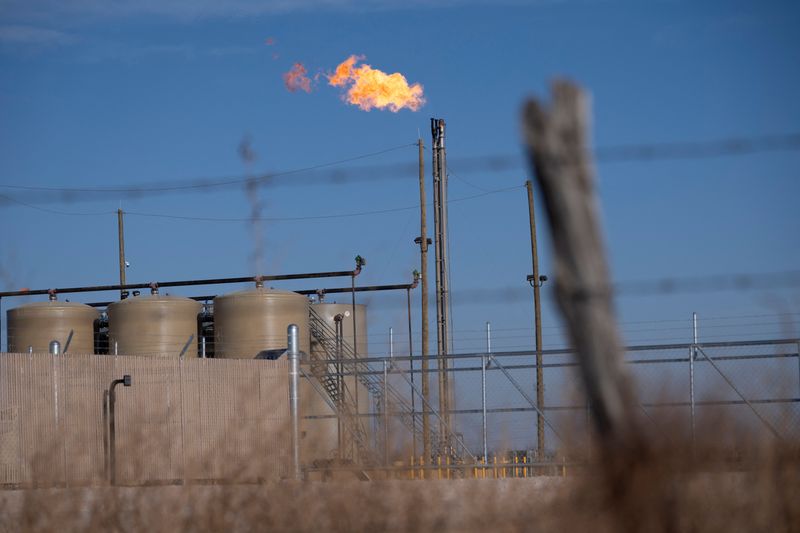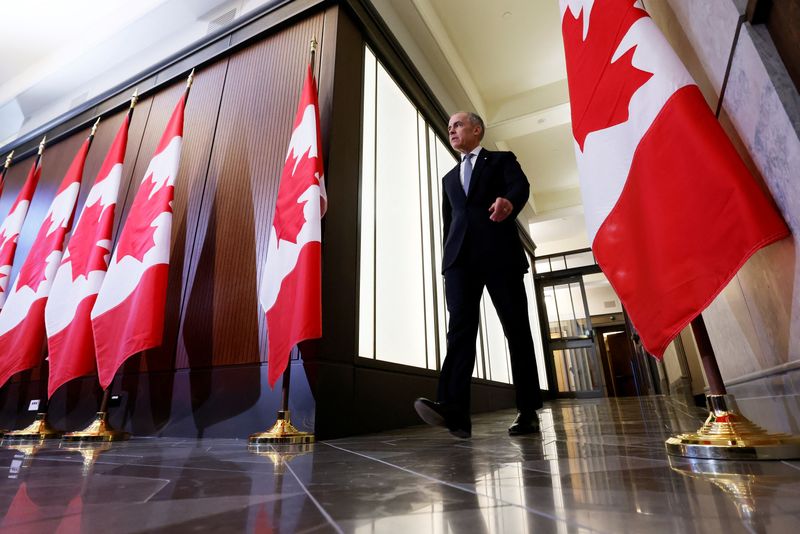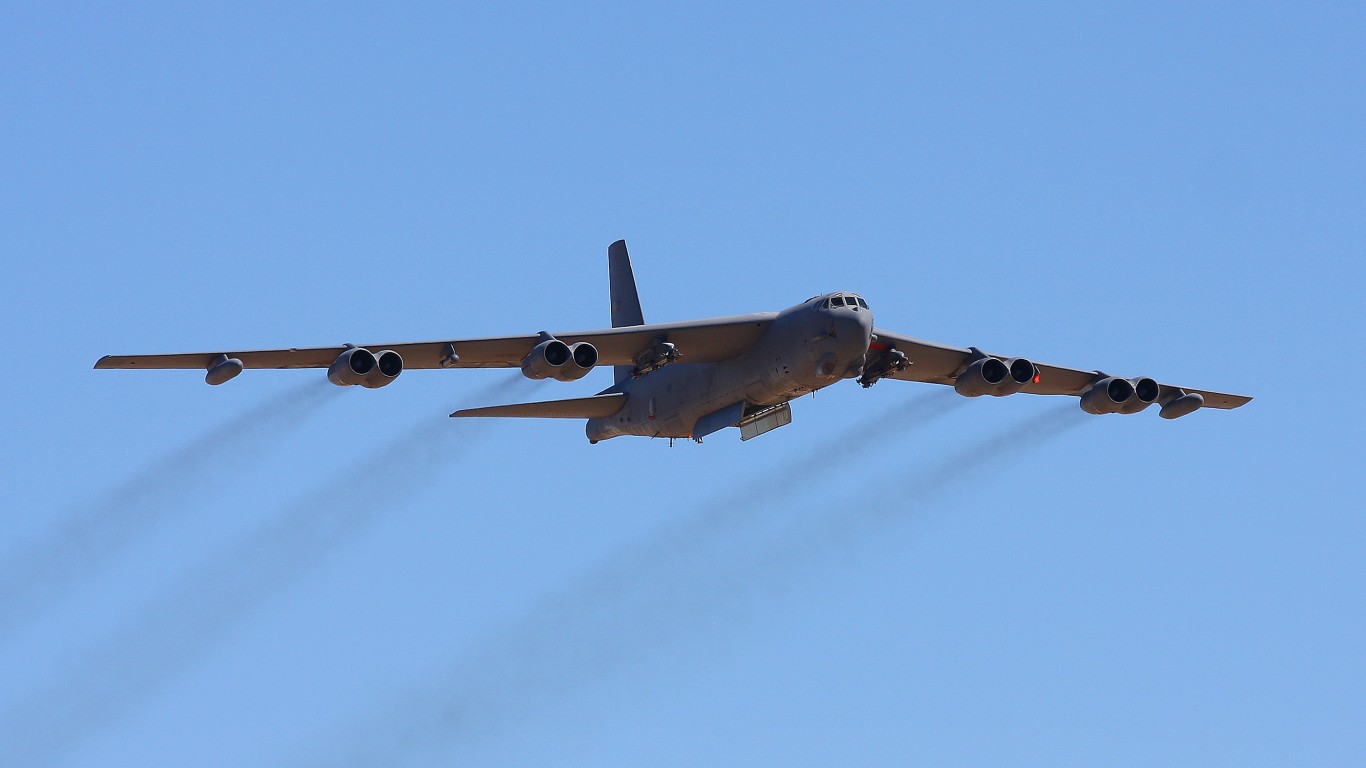Will This Combat Aircraft Make It to a Century of Service?
American president Donald Trump recently announced that Boeing had been awarded a contract to produce the U.S. Air Force’s new generation of fighter jets. While the U.S. currently has several fifth-generation aircraft in its fleet, the F-47 — named for Trump’s position as 47th president — would be an advanced sixth-generation fighter jet with capabilities […] The post Will This Combat Aircraft Make It to a Century of Service? appeared first on 24/7 Wall St..
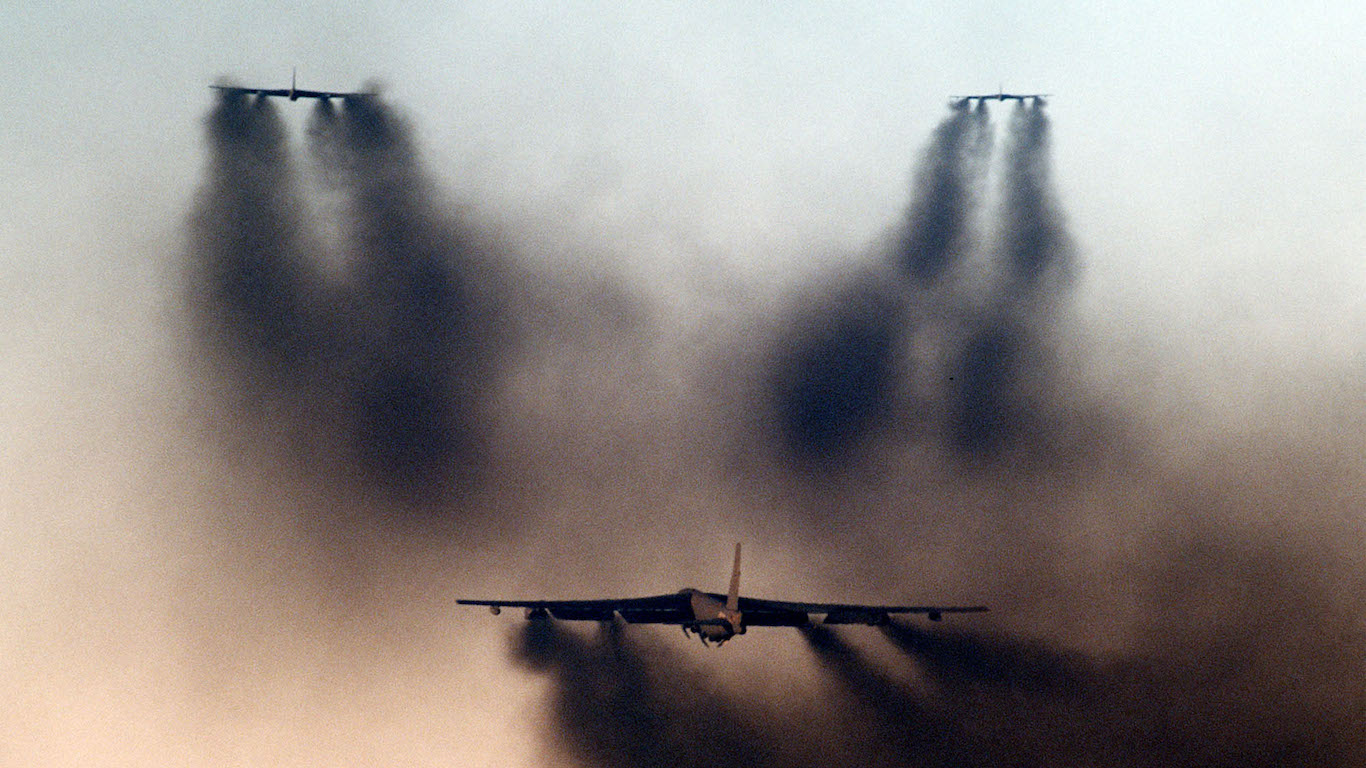
American president Donald Trump recently announced that Boeing had been awarded a contract to produce the U.S. Air Force’s new generation of fighter jets. While the U.S. currently has several fifth-generation aircraft in its fleet, the F-47 — named for Trump’s position as 47th president — would be an advanced sixth-generation fighter jet with capabilities that many people cannot even imagine. In addition to advanced stealth technology and autonomous command/contral capabilities, the F-47 will be capable of aerial refueling, can reach supersonic speeds without an afterburner, and will hold significant and highly precise armament. This announcement comes at a time when the global outlook around American-made aircraft like the F-35 has been tenuous at best. Still, the F-47 has the potential to advance American air superiority and provide the U.S. Air Force with a strong, sturdy, and dependable plane. (These 20 facts show the true power of America’s $217 billion Air Force.)
While innovation is a centerpoint of American aviation, and companies are consistently looking to see where they can improve their offerings, examining the U.S. Air Force fleet also illuminates another truth: that while innovation is important, there are many aircraft that the U.S. has been relying on for decades. Yes, the F-47 may contribute to enhanced security and deter enemy forces from attacking. But the Air Force’s current aircraft have been contributing to American defense since the 1950s — and the Air Force has no desire to give these planes up anytime soon. Here, 24/7 Wall St. set out to determine which combat aircraft have been in service for the U.S. Air Force for the longest time. To identify the oldest and newest U.S. Air Force planes, we sourced data from FlightGlobal’s 2025 World Air Forces directory. This directory explores the military aircraft fleets of 161 nations. We looked at the entirety of combat aircraft used by the U.S. Air Force, then identified the 16 aircraft that represent both the newest and oldest of the Air Force’s fleet. These are listed from most newly introduced to the oldest introduced. Supplemental information was sourced from Britannica and Air Force fact sheets.
This previously published article was updated on March 26, 2025 to represent new available data from the World Air Forces directory, as well as to cover recent announcements on Air Force aircraft development in the United States.
Why Cover This Now?
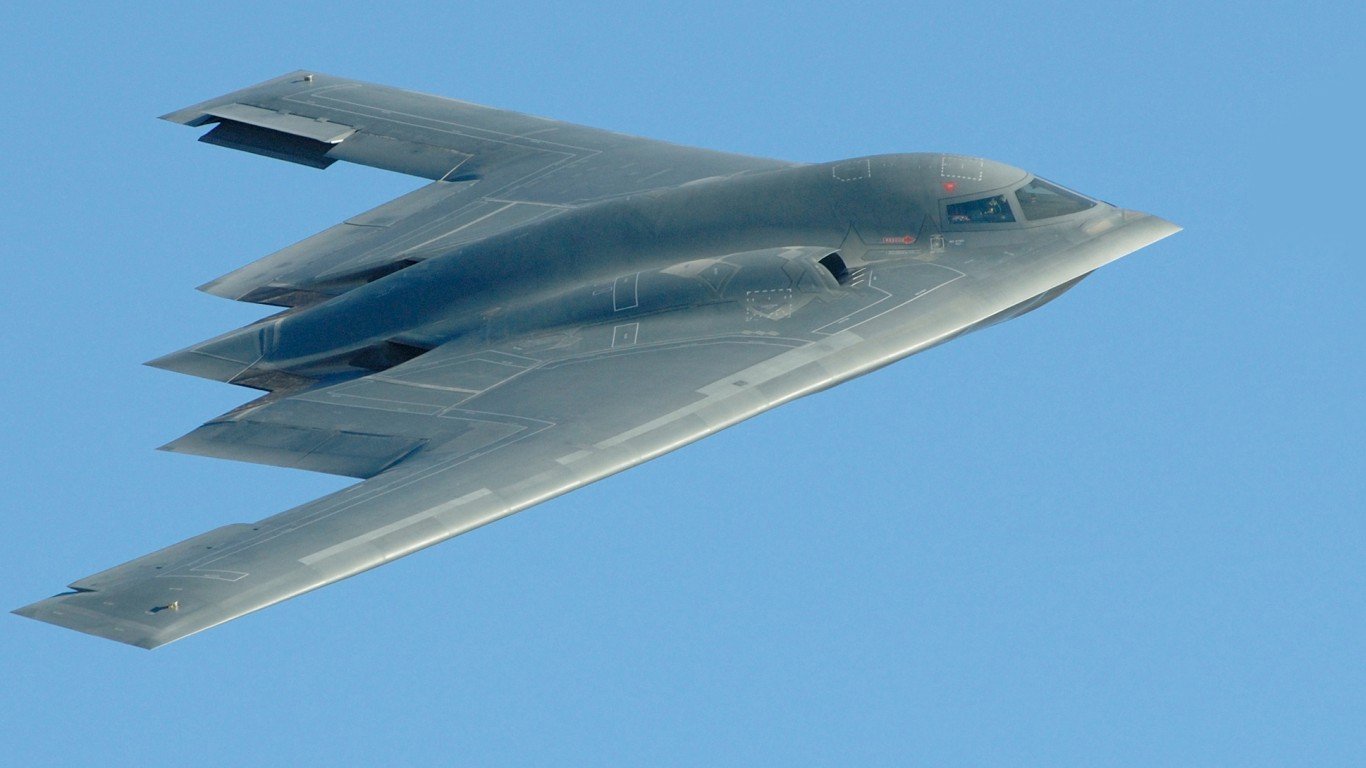
If you look at today’s news, it seems like our world is increasingly in flux. Conflicts are breaking out across the globe; the U.S. recently sent B-2 bombers to Yemen due to the ongoing challenges of Yemeni Houthi rebels. Undoubtedly, aircrafts allow militaries to project power over greater distances and contribute to a heightened sense of global and national security.
Outside of the development of the F-47, the U.S. is also looking to innovate in other areas. ZeroAvia, a hydrogen flight startup, was also awarded a Small Business Innovation Research (SBIR) grant to “evaluate the integration of hydrogen propulsion into a Cessna Caravan aircraft that would also be fitted with automated flight technology.”
As geopolitical tensions abound, and countries continue to build their fleets, the country with the strongest fleet is positioned to strike — or defend — should the need arise. Many aircraft used by the U.S. Air Force have already proven their ability to withstand harsh battle conditions. By seeing which new and old aircraft the U.S. Air Force could deploy, you know where America stands if a battle breaks out.
Here are the U.S. Air Force’s newest and oldest aircraft in service:
16. B-21 Raider

- Type: Long range strategic stealth bomber
- Year introduced: First flight taken in 2023 — expected to be more widely used/operational by the mid-2020s
- Active aircraft: 100 on order
- Top speed: 621 mph
- Armament: Conventional drop bombs, precision-guided bombs, nuclear-tipped bombs/missiles
A Significant Advancement in Aviation Technology

Within the next decade, the B-21 Raider, developed by Northrup Grummon, is expected to enter service to augment the B-2 Spirit stealth bombers. The B-21 Raider took its first flight in November 2023 and currently has at least three test arcraft developed. This aircraft will be capable of carrying both conventional and precision-guided drop bombs, as well as nuclear-tipped bombs and missiles. Many people believe that this sixth-generation aircraft can solidify U.S. air superiority. The U.S. Air Force seems to agree — 100 of these stealth bombers are already on order.
15. AC-130J Ghostrider
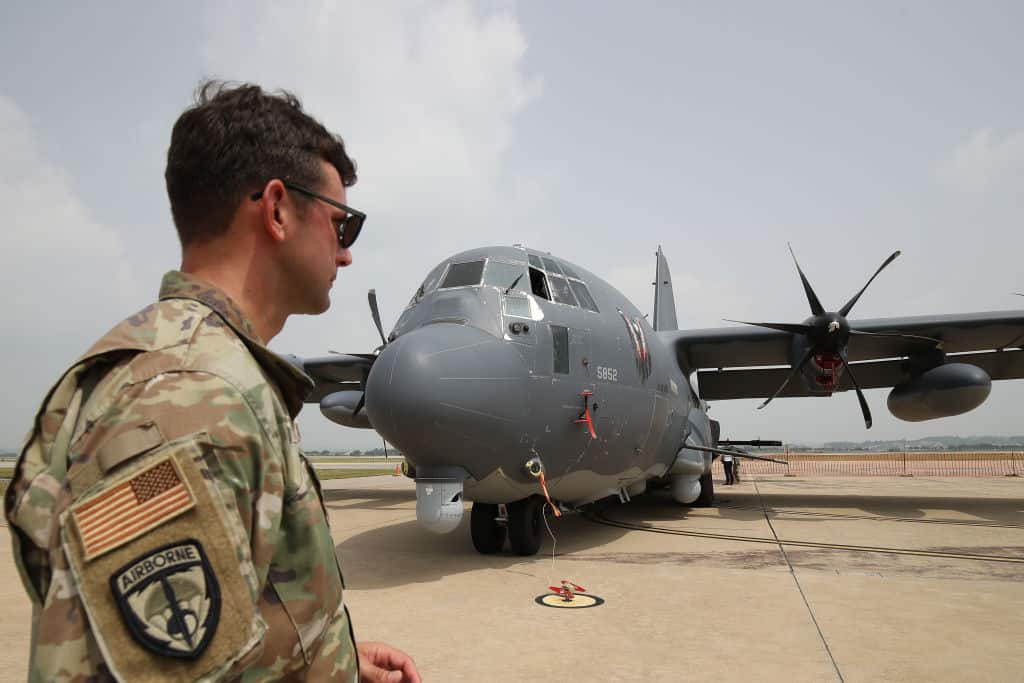
- Type: Ground attack / close-air support
- Year introduced: 2017
- Active aircraft: 29
- Top speed: 416 mph
- Armament: 30mm ATK GAU-23/A automatic cannon, 105mm M102 field howitzer, Griffin missiles, Viper Strike precision-guided bombs, Hellfire missiles, drop bombs
Five Years to Reach Operational Capacity
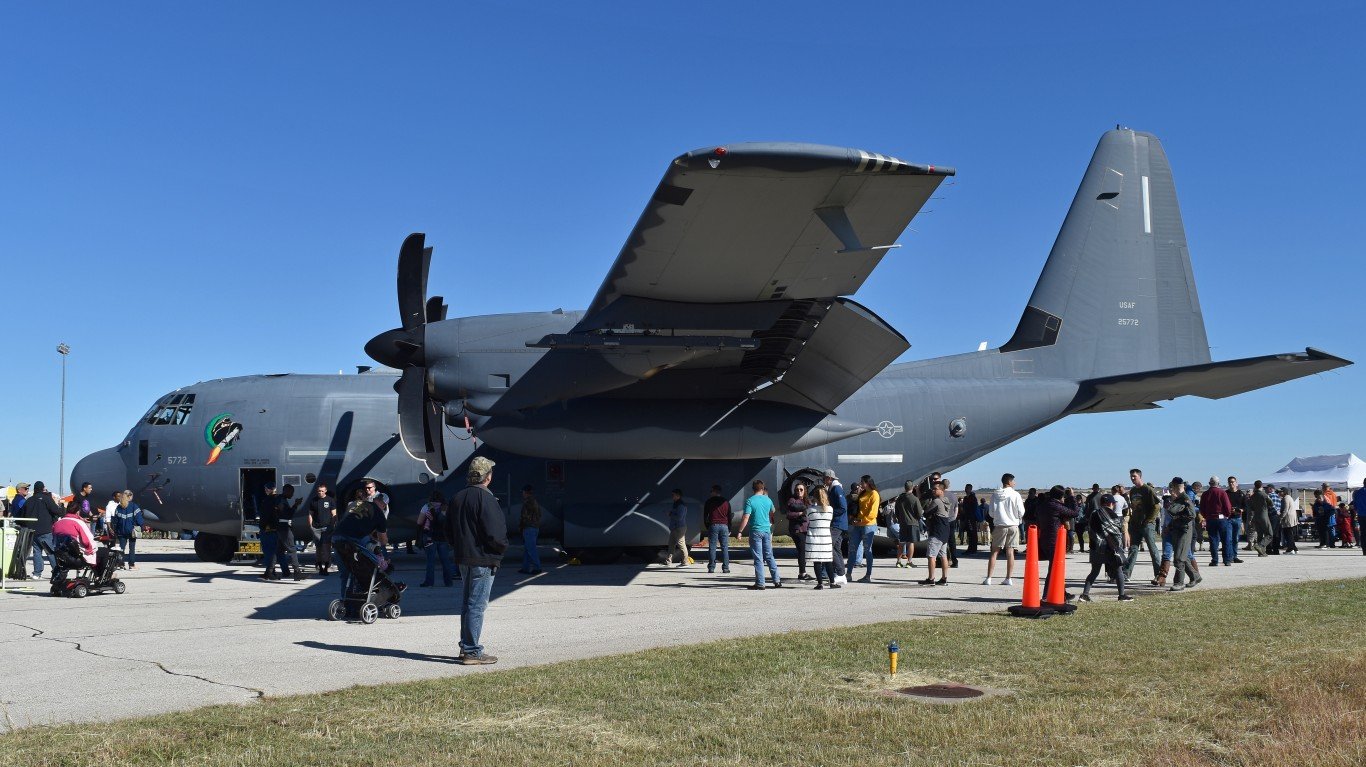
Although the AC-130J Ghostrider was given its name in 2012, the plane took five more years to reach initial operational capacity in 2017. The latest in the AC-130 gunship series, the Ghostrider was then first deployed in 2019. These gunships do not carry nukes. However, the Ghostrider can equip practically any other ordnance, even guns meant for ground artillery use. As such, the Ghostrider can be considered one of the most heavily armed aircraft used by the U.S. Air Force.
Most notable is the 105mm howitzer, typically seen on ground artillery platforms. This big gun delivers serious firepower with pinpoint accuracy from far above the battlefield, giving it an incredible tactical advantage. Outside of the 105mm howitzer, Ghostrider can equip a variety of missiles like Hellfires or Griffins, precision-guided bombs, or even just the basic conventional drop bombs.
14. F-35A Lightning II
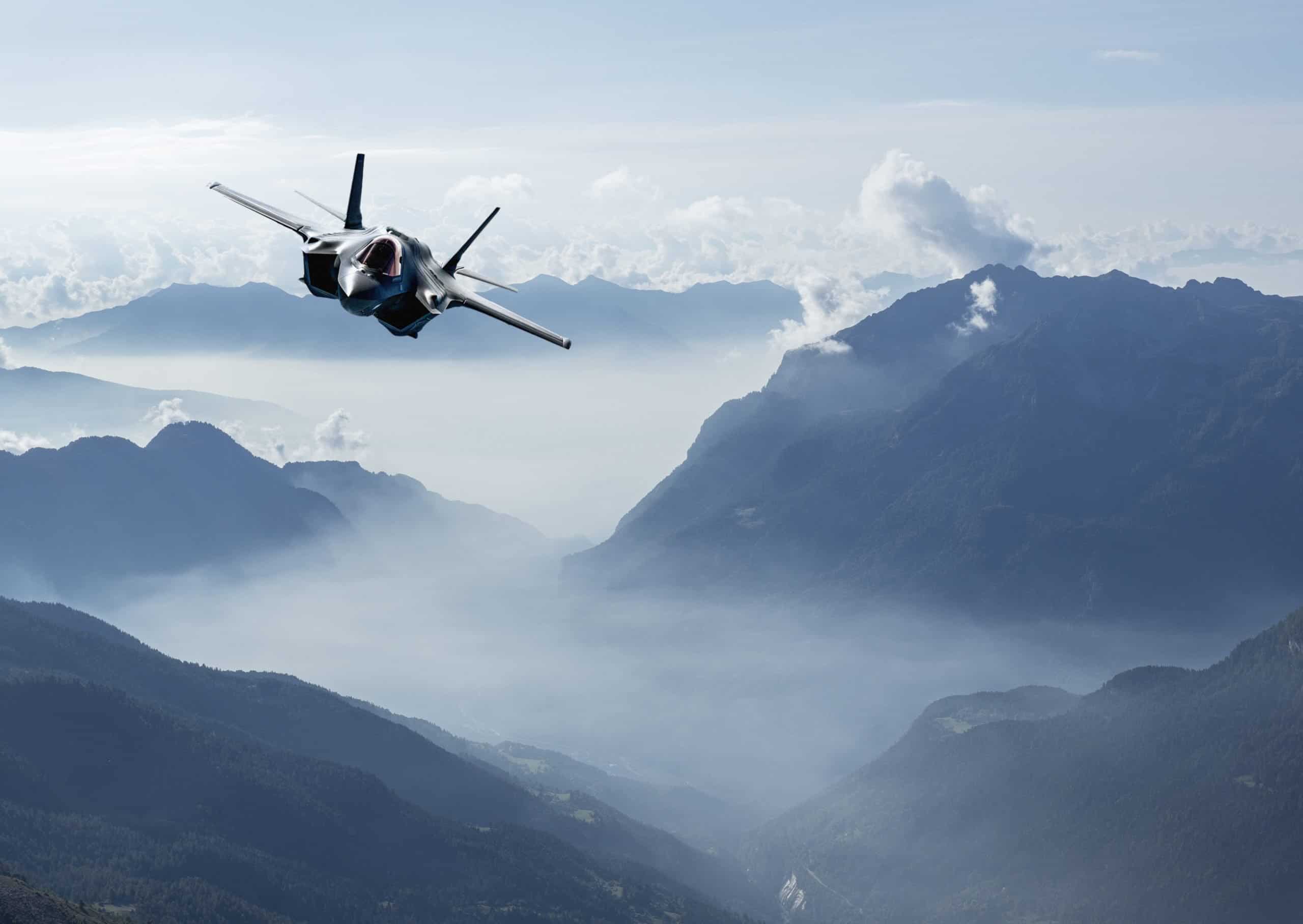
- Type: Multirole 5th generation stealth fighter jet
- Year introduced: 2016
- Active aircraft: 246 (35+1,315 on order)
- Top speed: 1,200 mph
- Armament: 25mm GAU-12/U automatic cannon, Sidewinder missiles, Paveway guided bombs, Rockeye II bombs, Brimstone missiles, Storm Shadow missiles, drop bombs
A League of Its Own
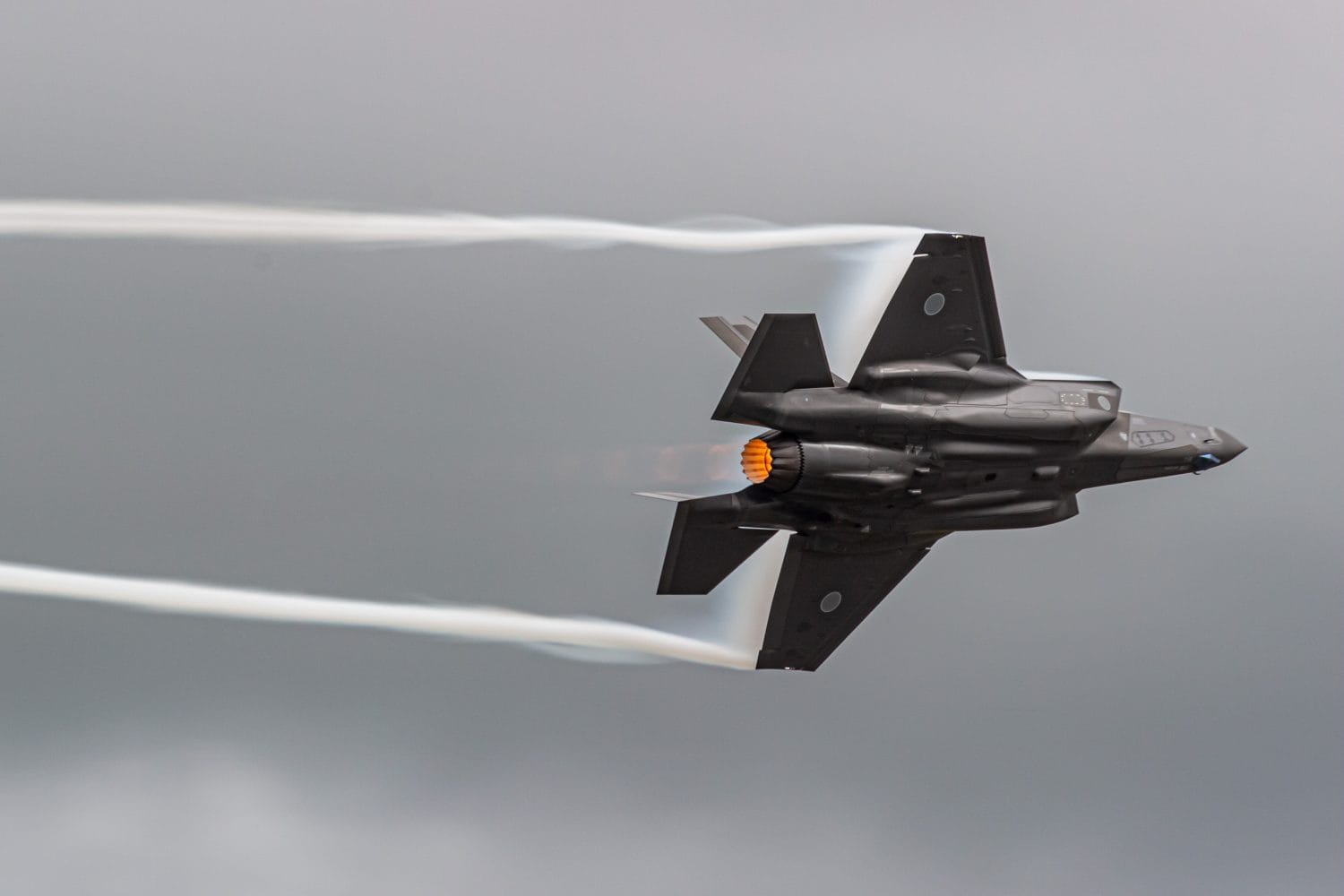
Introduced into service in 2016, the F-35A Lightning II is one of the newest and most highly lauded fifth-generation aircraft. Currently, there are hundreds on order from Lockheed Martin for the U.S. military at large — and several countries around the world are also in the process of purchasing these fighter jets. One of the reasons why the F-35A Lightning II is so highly coveted is because of its advanced technology, including information fusion and advanced sensors.
13. AC-130W Stinger II
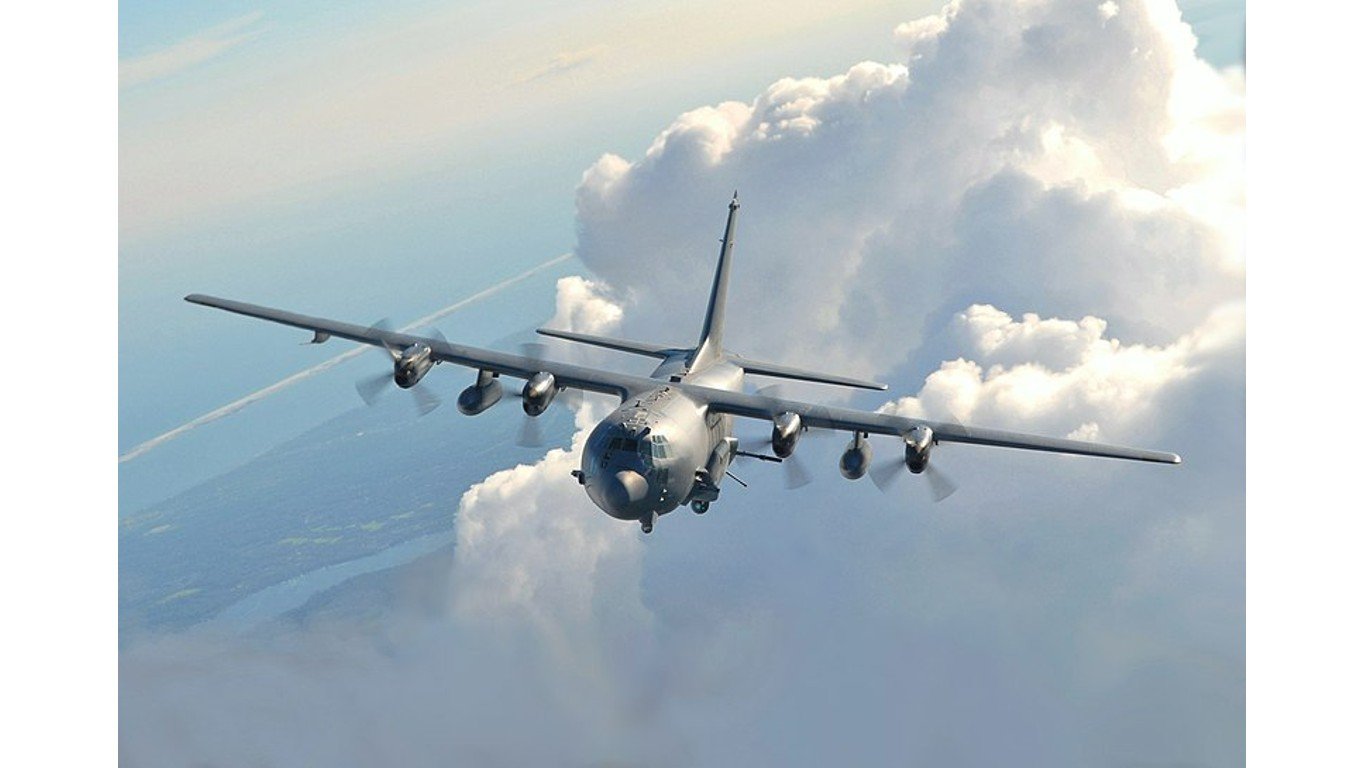
- Type: Special operations fixed-wing gunship
- Year introduced: 2010
- Active aircraft: 3
- Top speed: 300 mph
- Armament: 30mm Bushmaster II GAU-23/A gatling gun, Viper Strike missiles, Griffin missiles, Hellfire missiles
Impressive Range
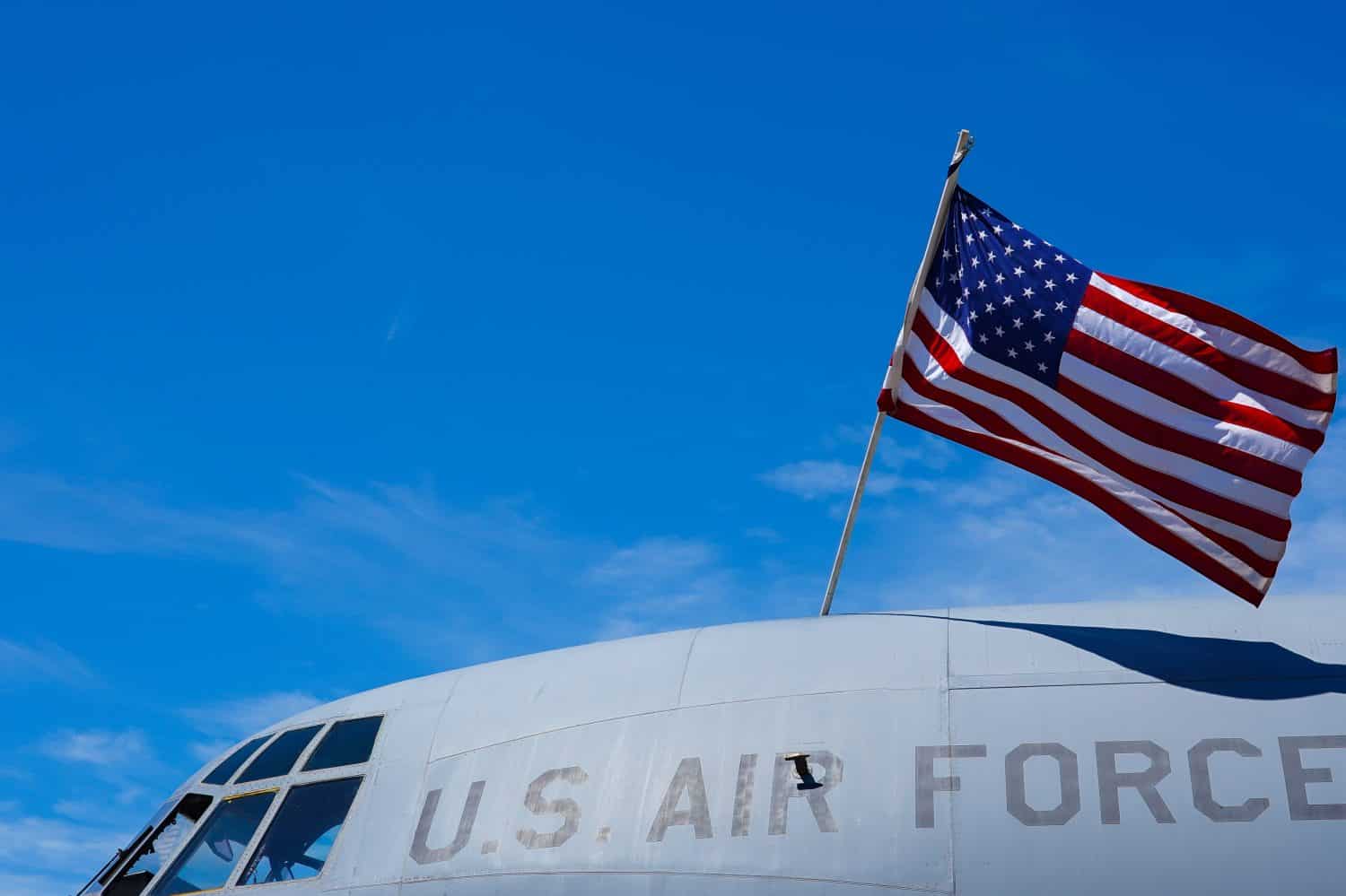
The Stinger II is a step up from the legacy AC-130 gunships, notably integrating advanced missile systems. Built by Lockheed Martin, this gunship only recently entered service in 2010. Armed with a 30mm Bushmaster II GAU-23/A gatling gun, along with Viper Strike, Griffin, and Hellfire missiles, the Stinger II is designed to deliver serious firepower in support of ground forces. This aircraft also boasts an impressive range of 2,875 miles (or 2,500 nautical miles) and a ceiling of 28,000 feet.
12. CV-22 Osprey
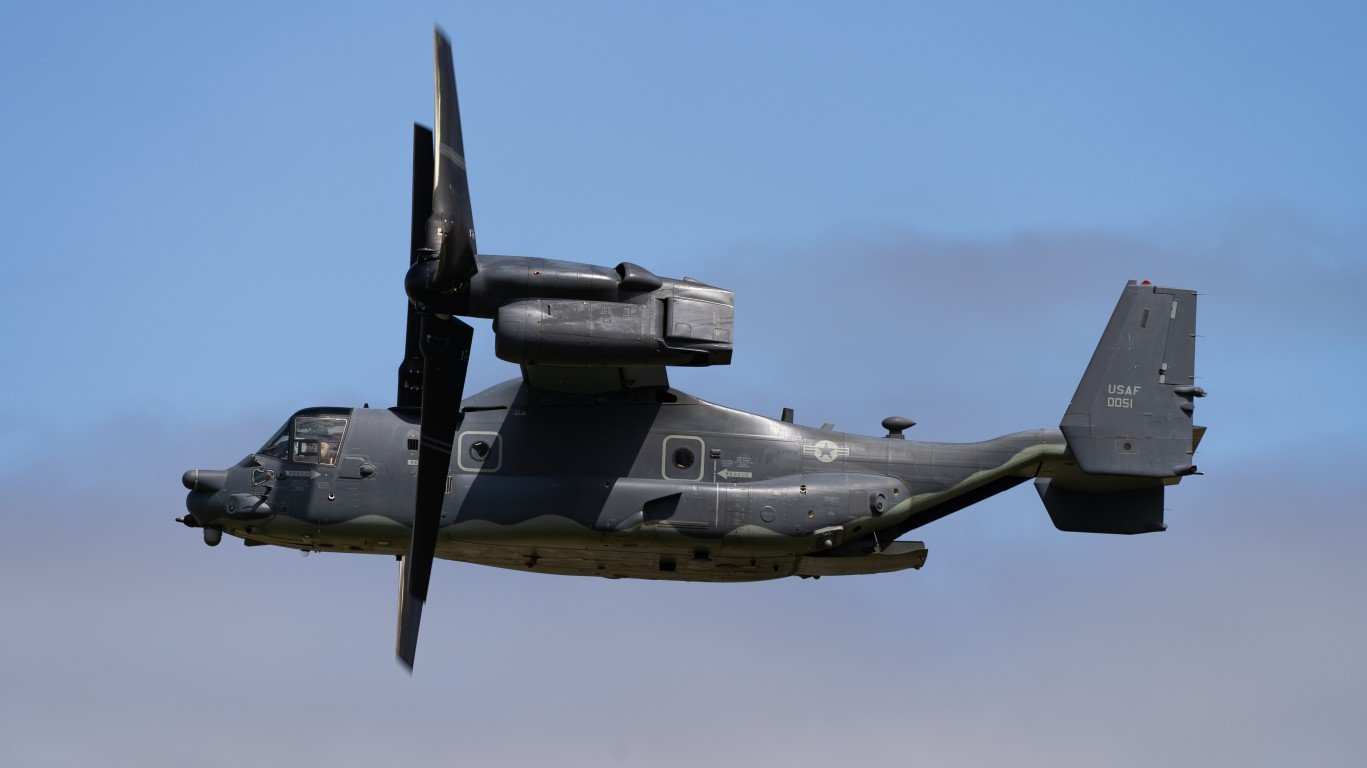
- Type: Tilt rotor VTOL aircraft
- Year introduced: 2007
- Active aircraft: 51 (2 on order)
- Top speed: 316 mph
- Armament: 7.62mm machine guns, 12.7mm machine guns
Unique Abilities
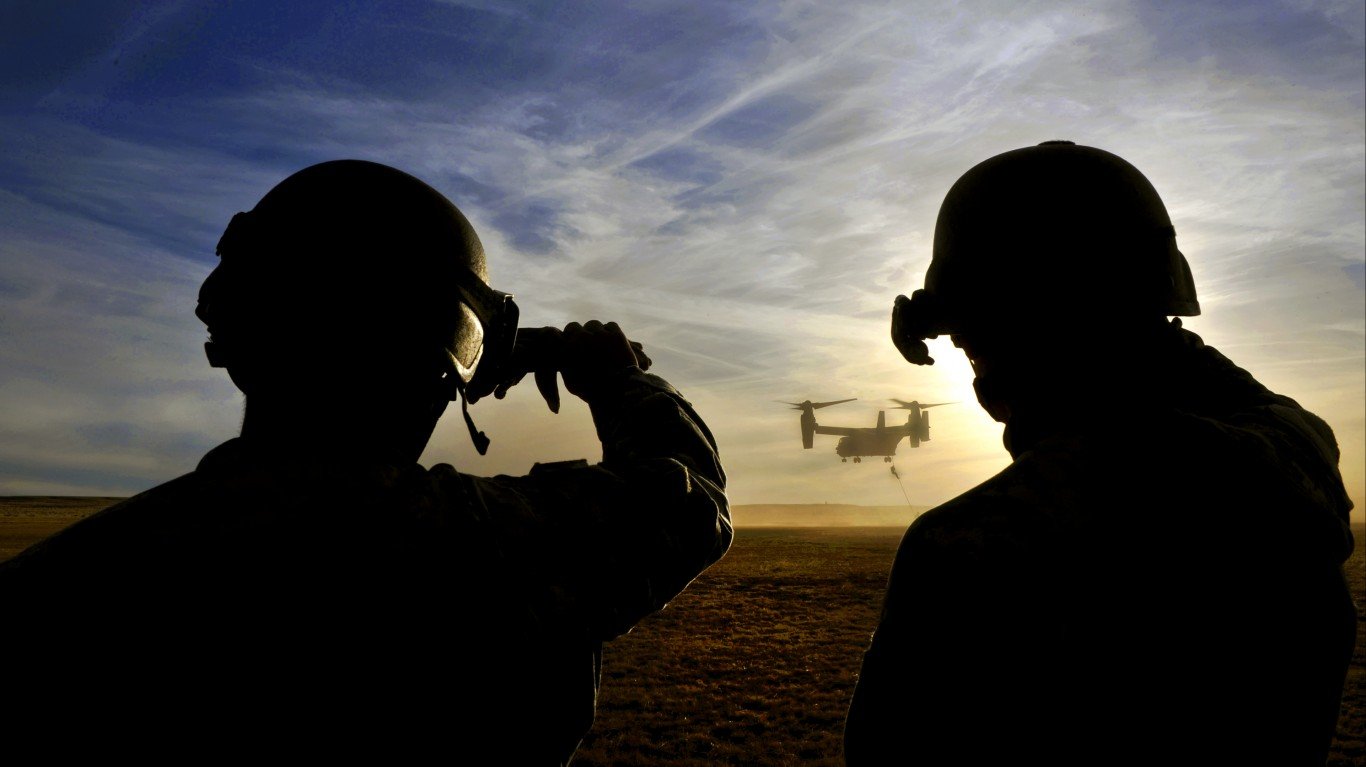
Known for its ability to take off and land vertically like a helicopter and adjust its rotors to operate like a turboprop plane, the CV-22 Osprey is one of the more unique aircraft in the U.S. military. Manufactured by Bell Boeing, the CV-22 Osprey plays key roles in U.S. special operations missions like infiltration, extraction, and resupply. While this aircraft is used by the U.S. Air Force, it is also used by the U.S. Navy for troop deployment and extraction, or even logistical purposes. The Osprey can refuel mid-flight which significantly extends its range for longer missions.
Since its introduction, the CV-22 Osprey has seen action in major operations, including Iraq, Afghanistan, and humanitarian missions worldwide, typically filling a logistical role. In terms of its cargo, the Osprey is capable of carrying up to 24 combat-loaded Marines or 20,000 pounds of internal or external cargo.
11. F-22 Raptor
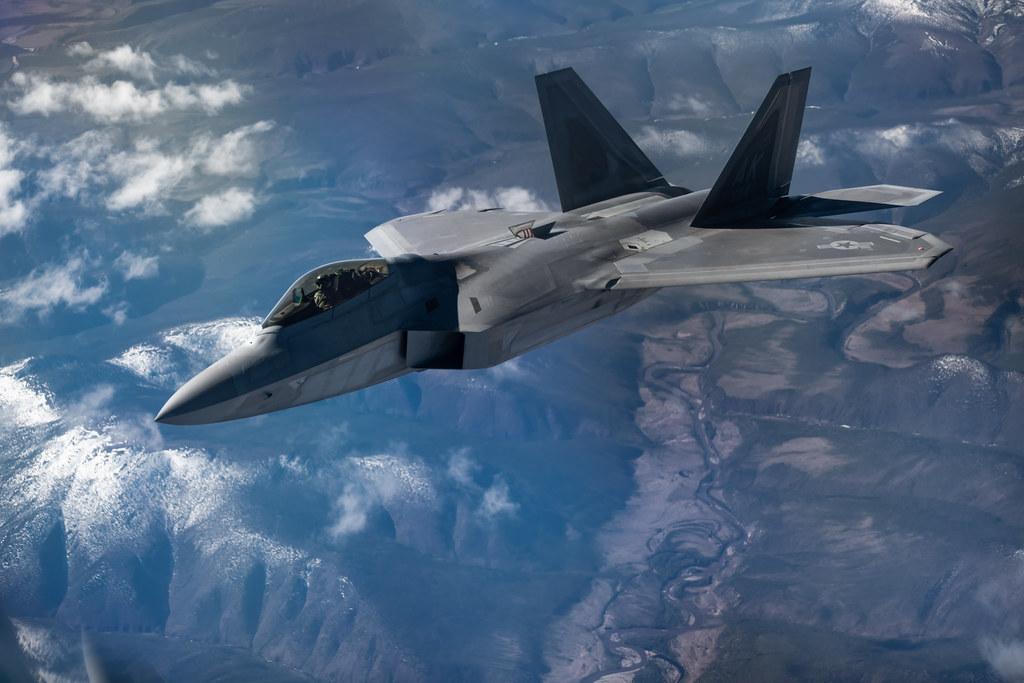
- Type: 5th generation air dominance supersonic stealth fighter
- Year introduced: 2005
- Active aircraft: 178
- Top speed: 1,500 mph
- Armament: 20mm automatic cannon, Sidewinder missiles, AMRAAM missiles, joint drop munitions, drop bombs, air-launched cruise missiles
Unmatched Agility
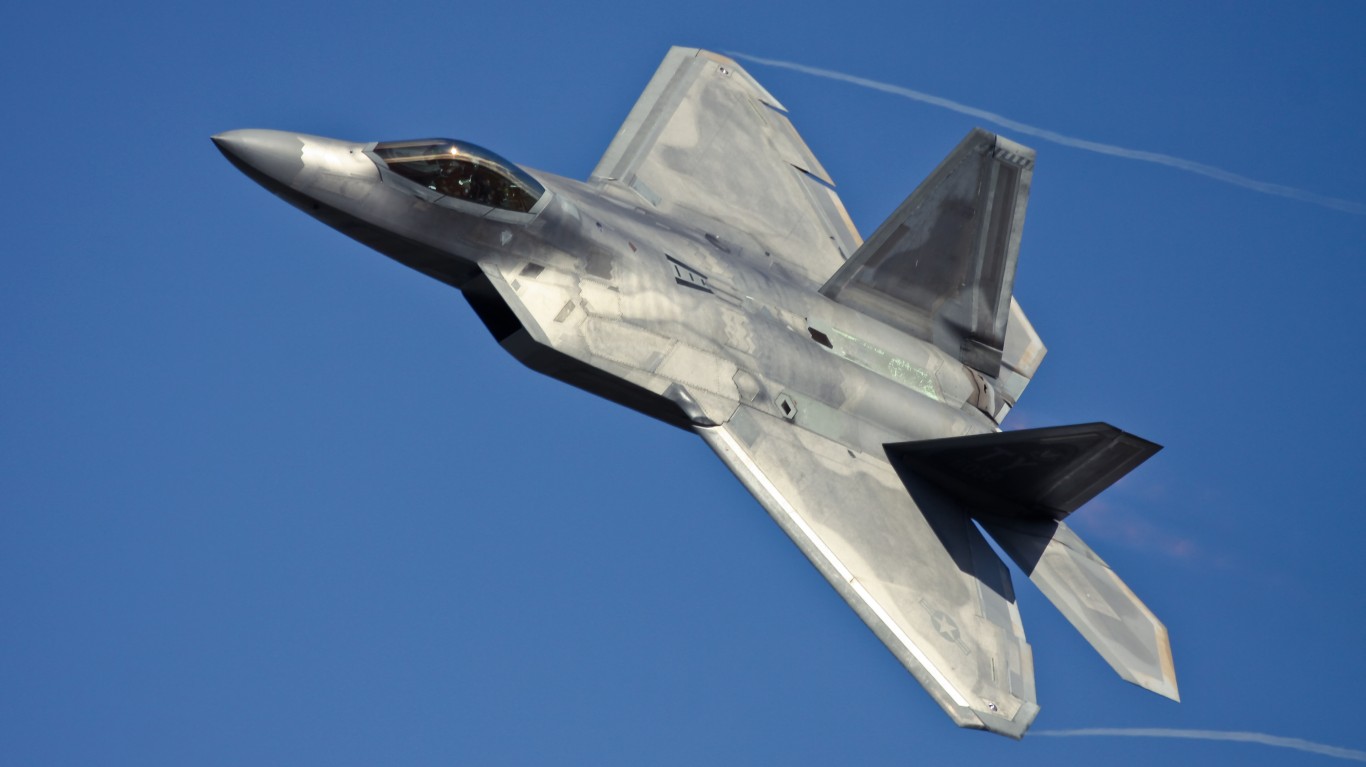
The F-22 Raptor is an elite fifth-generation aircraft and features some of the newest stealth technology. This extremely fast plane can hit speeds around Mach 2. But the F-22 Raptor is equally lauded for its unmatched agility and advanced avionics, making it a dominant force in both air superiority and strike missions. What’s interesting about this aircraft is that the F-22 Raptor’s supercruise ability enables it to sustain high-speed flight without the need for afterburners. This sets it apart from most other fighters, which typically require afterburners to exceed the speed of sound.
10. Leonardo AW139 (MH-139)
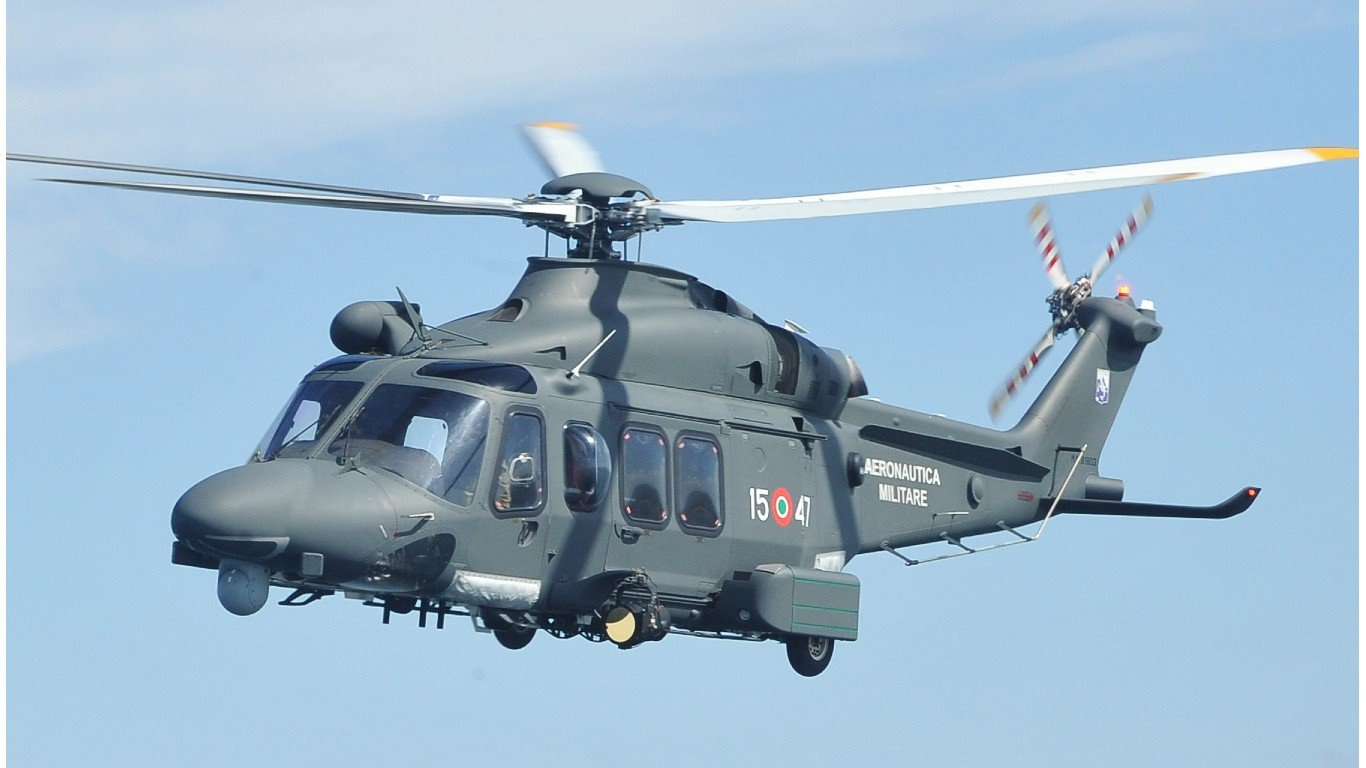
- Type: Medium-lift utility helicopter
- Year introduced: 2003
- Active aircraft: 8 (17+57 on order)
- Top speed: 193 mph
- Armament: 7.62mm general purpose machine guns
A Multi-Use Helicopter
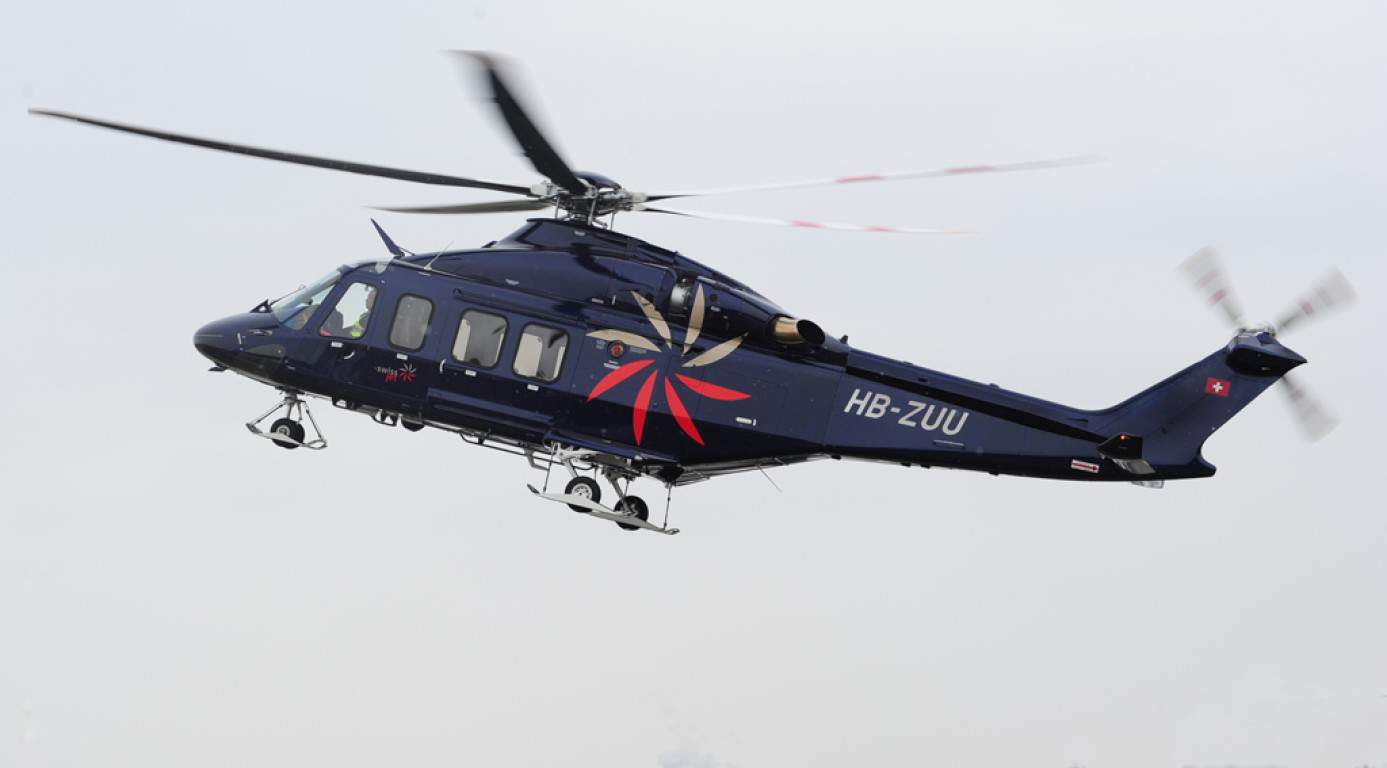
Originally designed and constructed by Leonardo, the AW139 is used by both the military and civilians. These helicopters were initially designed for search-and-rescue missions, but they have been adopted for other purposes since then. The military version can equip small machine guns, but its primary designation is not for combat. This versatile, twin-engine helicopter has a maximum range of 776.7 miles.
9. B-2 Spirit
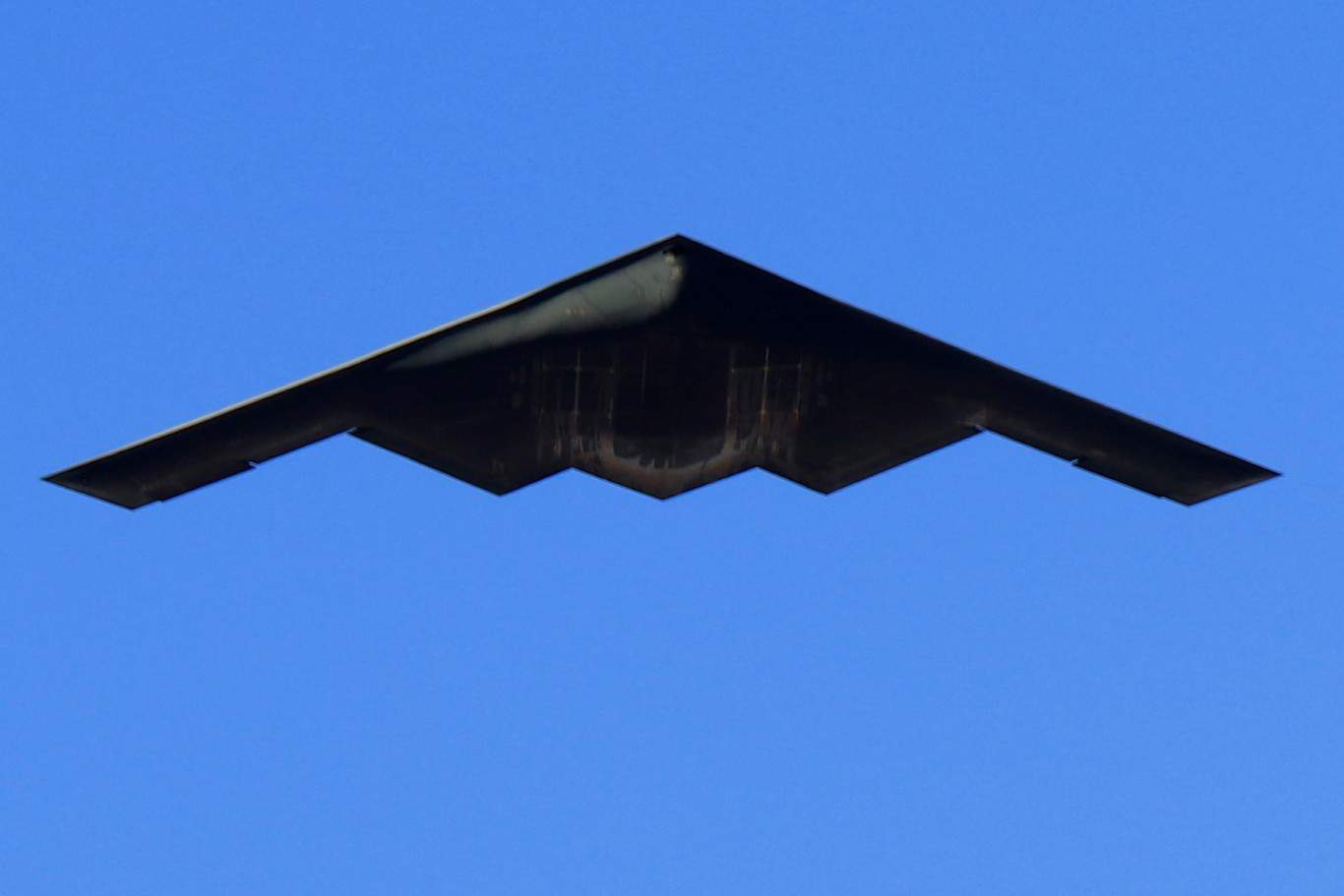
- Type: Strategic stealth heavy bomber
- Year introduced: 1997
- Active aircraft: 17
- Top speed: 628 mph
- Armament: Air-launched cruise missiles, strategic free-fall nuclear bombs, conventional drop bombs, joint direct attack munitions, JASSM missiles
A High Payload

Manufactured by Northrop Grumman, the B-2 Spirit is a strategic stealth heavy bomber first developed under the Advanced Technology Bomber (ATB) project during the Carter administration. This aircraft is specially designed to deliver a wide range of ordnance including nuclear bombs. The B-2 Spirit aircraft can punch far above their class in terms of what they can deliver in payload. These aircraft are also incredibly versatile: performing at altitudes up to 50,000 feet with a range of 6,897.2 miles.
8. B-1B Lancer
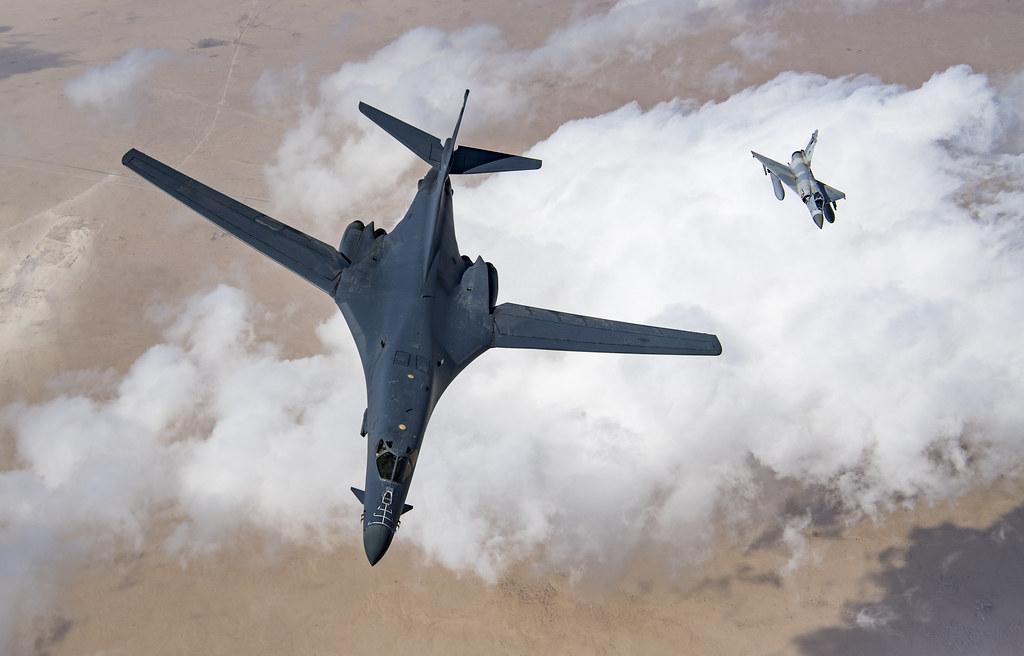
- Type: Strategic heavy bomber
- Year introduced: 1986
- Active aircraft: 40
- Top speed: 833 mph
- Armament: Joint direct attack munitions, general purpose bombs, naval mines, cluster munitions, SRAM missiles, JASSM missiles, JSOW missiles, freefall nuclear bombs
It’s Got Speed for a Bomber
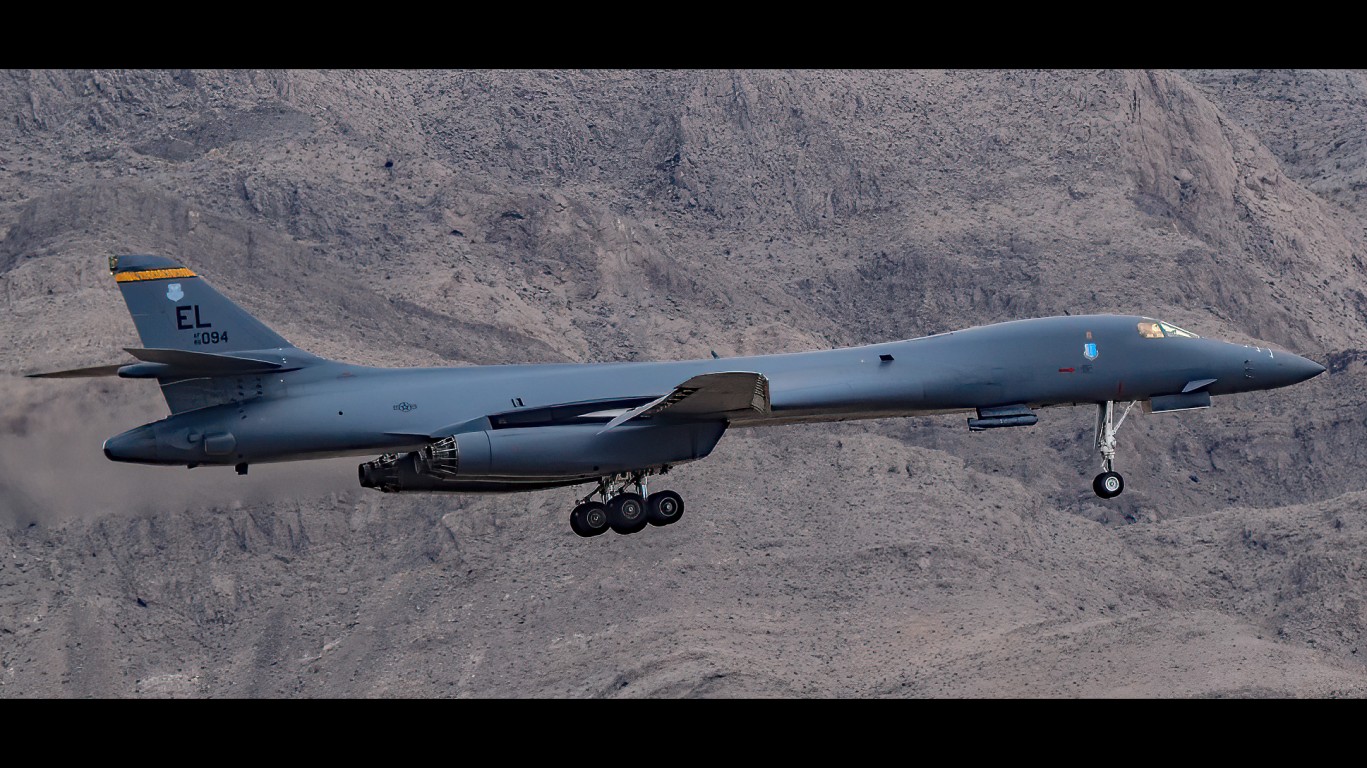
Introduced in 1986, the B-1B Lancer is a strategic heavy bomber that is considered one of the fastest bombers in the U.S. Air Force. This air craft is extremely maneuverable in both high and low altitude environments, making it a durable tool for various combat situations. Nicknamed “the Bone,” this supersonic aircraft has played a role in Operation Desert Fox, Operation Allied Force, Operation Enduring Freedom, and Operation Iraqi Freedom.
7. Mi-171
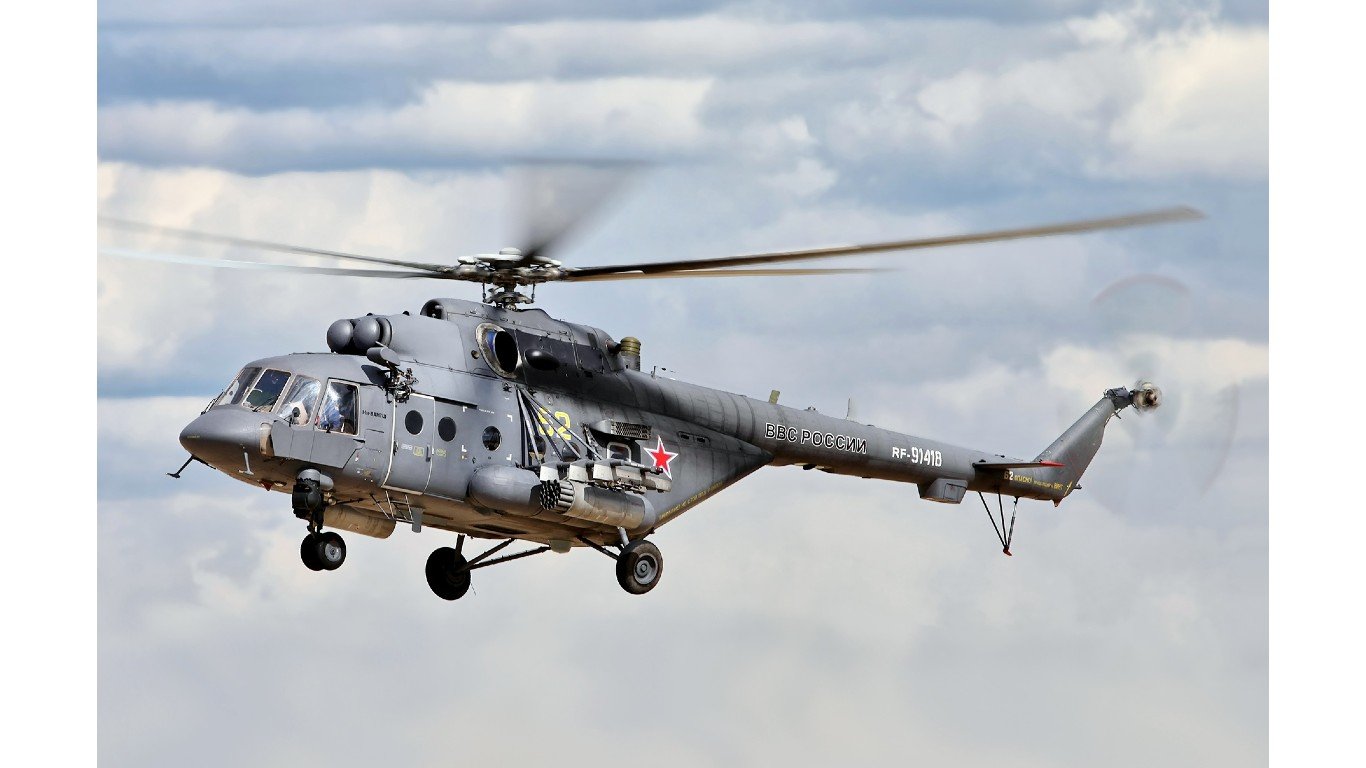
- Type: Medium-lift transport helicopter
- Year introduced: 1981
- Active aircraft: 1
- Top speed: 158 mph
- Armament: Shturm missiles, rocket pods, 23mm cannon pods, 7.62mm machine guns
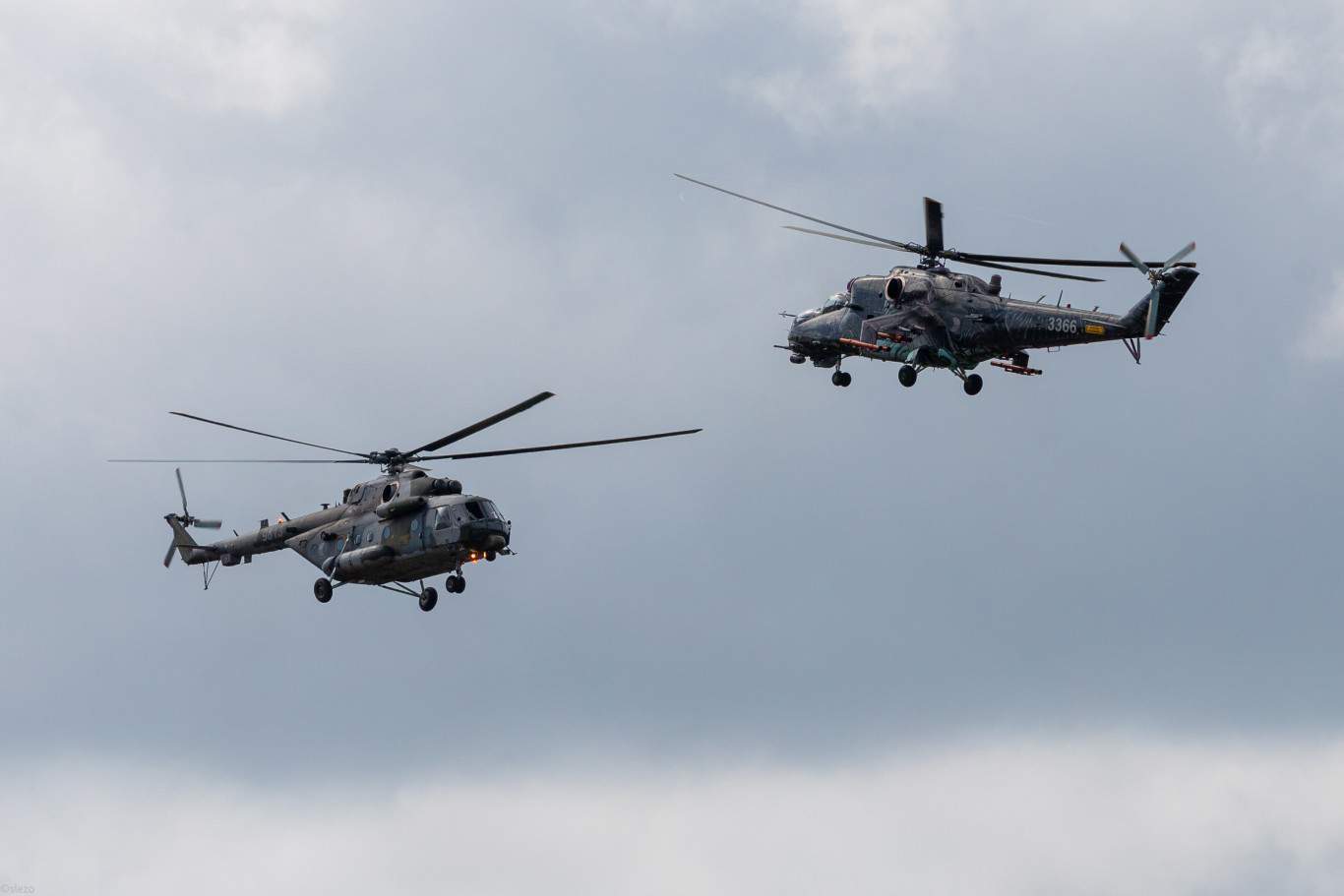
Originally designed by the Soviets at the Mil Moscow Helicopter Plant, the Mi-171 has been a staple for the Russian Air Force for years. While this is a widely used helicopter for many militaries around the world, the U.S. Air Force only has one. However, American engineering for other more advanced helicopters like the Black Hawk or Apache is more of a priority for the U.S. Air Force.
6. S-70 Black Hawk
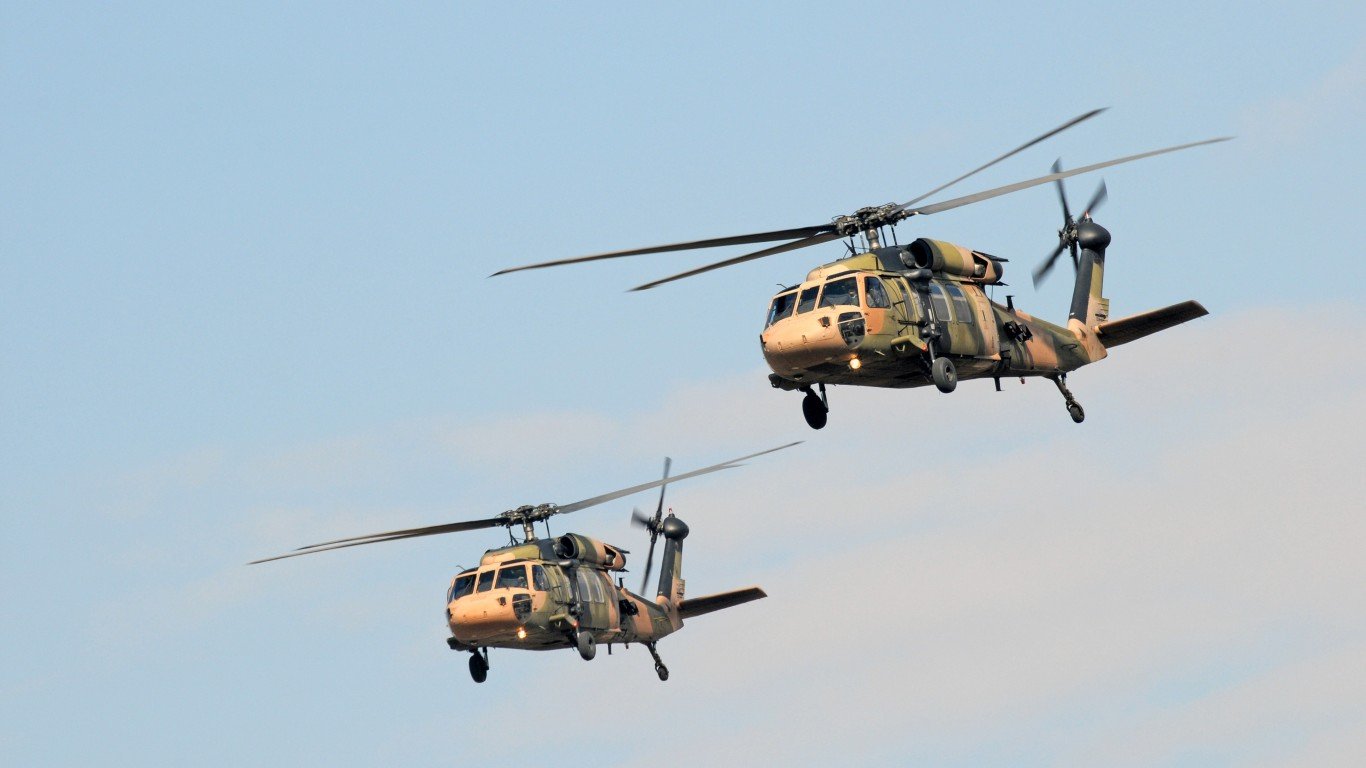
- Type: Medium-lift multi-mission helicopter
- Year introduced: 1979
- Active aircraft: 95 (1+72 on order)
- Top speed: 183 mph
- Armament: 7.62mm machine guns, Hellfire missiles, 12.7mm gatling guns, M134 gatling guns, rocket pods, 30mm chain gun
A Known Name

Black Hawk helicopters have played important roles in conflicts around the globe. One infamous instance was the conflict in Somalia in 1993, particularly the Battle of Mogadishu. The Black Hawk played a significant role in urban combat and casualty evacuation under intense fire. This story would go on to make it as a blockbuster movie, famously titled “Black Hawk Down.”
The S-70 Black Hawk remains, by far, one of the most iconic helicopters ever built. It is the workhorse of the U.S. military with over a few thousand units currently in service across all branches. The Black Hawk features twin turboshaft engines, a single four-bladed main rotor, and a four-bladed tail rotor, which allow for top speeds over 180 mph. Typically, this helicopter carries a crew of two pilots and two crew chiefs and can transport up to 11 fully equipped soldiers. In total, the Black Hawk can carry a payload of roughly 9,000 pounds.
5. F-16C Fighting Falcon
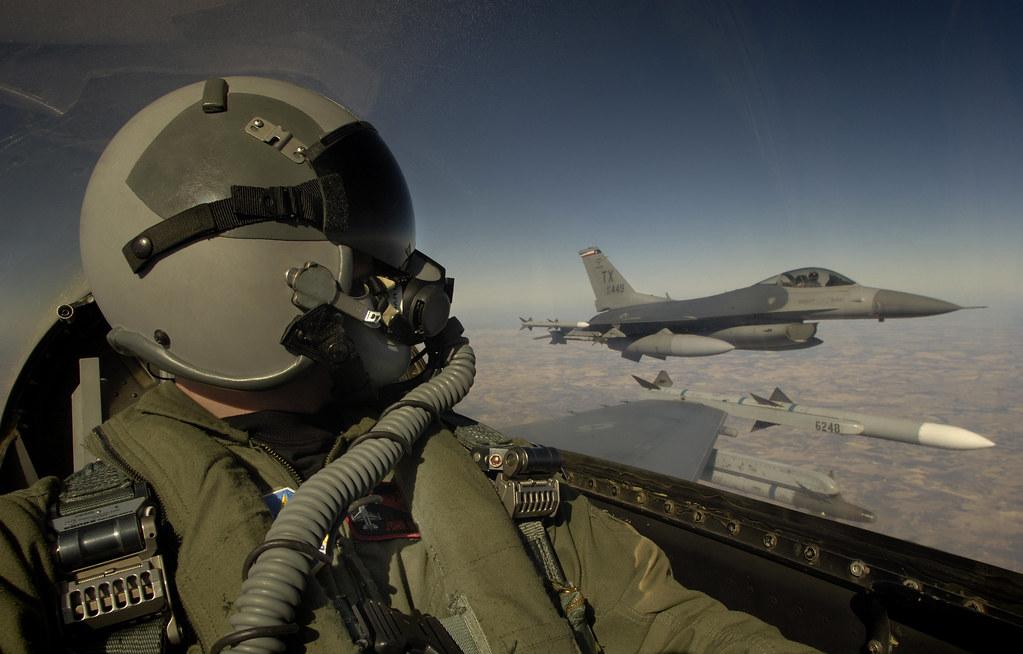
- Type: Multirole 4th generation fighter aircraft
- Year introduced: 1978
- Active aircraft: 708
- Top speed: 1,317 mph
- Armament: 20mm M61 automatic cannon, Sidewinder missiles, AMRAAM missiles, Maverick missiles, Penguin missiles, Runway denial bombs, cluster bombs, laser-guided bombs, conventional drop bombs
Agile for Its Age

Developed by General Dynamics, the F-16C Fighting Falcon is extremely agile and handles well by pilots. While the aircraft may not fully live up to its fifth (and soon-to-be-sixth) generation counterparts, this jet has undergone numerous upgrades and improvments over the years. The F-16C Fighting Falcon remains relatively cheap compared to the newest generations of fighter jets. Early variants sell for roughly $13 million, with more recent variants between $25-30 millions. If a country wants the most advanced F-16C versions, the aircraft can cost upwards of $60 million.
Still, air forces across the globe continue looking for avenues to procure these jets. The F-16C Fighting Falcon has an operational role of 2,600 miles and can fill many roles: primarily interceptions and general strike missions. This aircraft is also used for the U.S. Air Force Thunderbirds aerial demonstration.
4. F-15 C/E/EX Eagle II
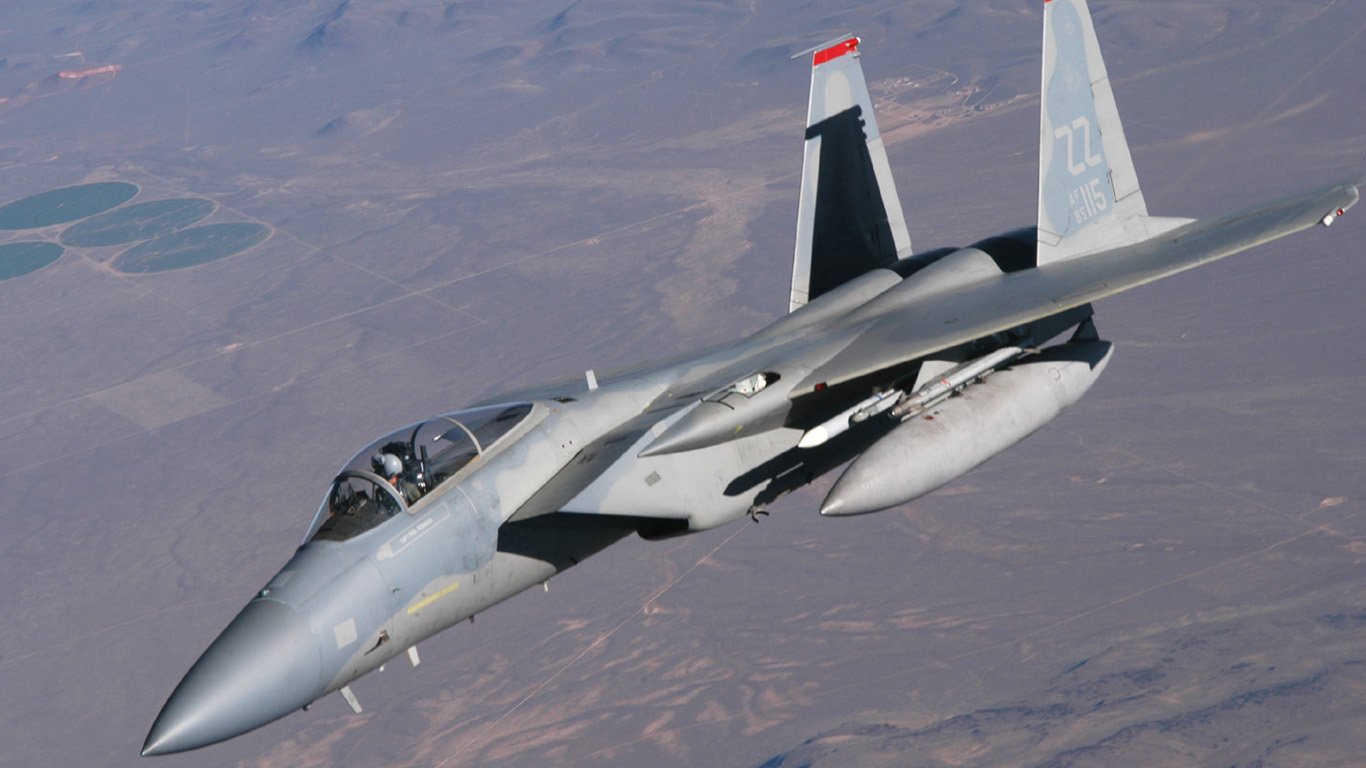
- Type: Air superiority fighter aircraft
- Year introduced: 1976
- Active aircraft: 351 (54+46 on order)
- Top speed: 1,875 mph
- Armament: 20mm M61A1 automatic cannon, Sidewinder missiles, Sparrow missiles, Maverick missiles, HARM missiles, laser-guided bombs, joint direct attack munitions, cluster bombs, nuclear bombs
No Combat Losses
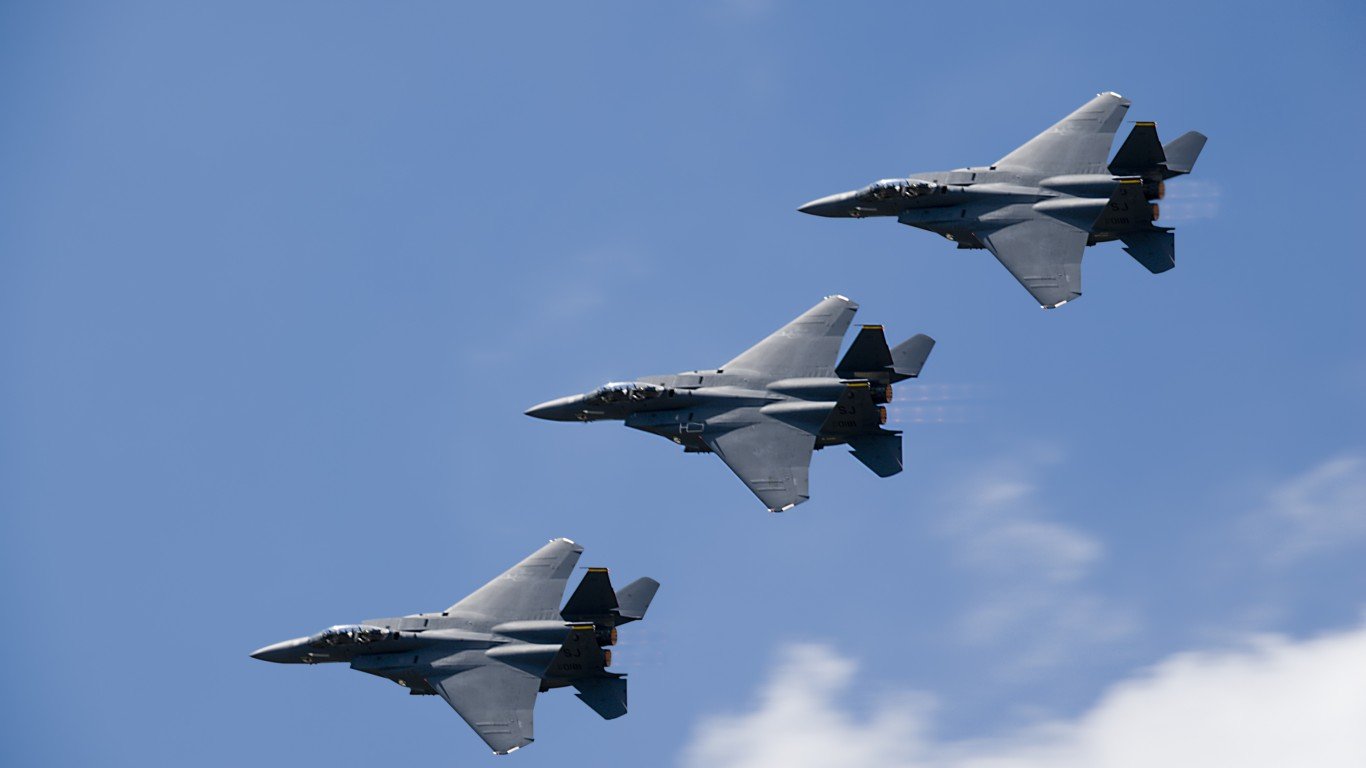
Developed by McDonnell Douglas (now Boeing) in the 1970s, the F-15 Eagle and Strike Eagle variant stand as some of the most iconic and successful fighter jets in the world. With a top speed over Mach 2, the F-15 can outrun almost anything in the sky. Its twin-engine design provides serious thrust, allowing some variants to carry over 16,000 pounds of ordnance, including air-to-air missiles and bombs.
One thing that stands out with this jet is its combat record. Since its introduction, the F-15 has claimed more than 100 air-to-air victories without a single loss in combat. The F-15 has been used in several conflicts, including Operation Desert Storm, where it proved its air superiority by downing numerous Iraqi aircraft. The Strike Eagle has seen extensive combat as well, especially in ground-attack operations in Iraq, Afghanistan, and Syria.
3. A-10C Thunderbolt II
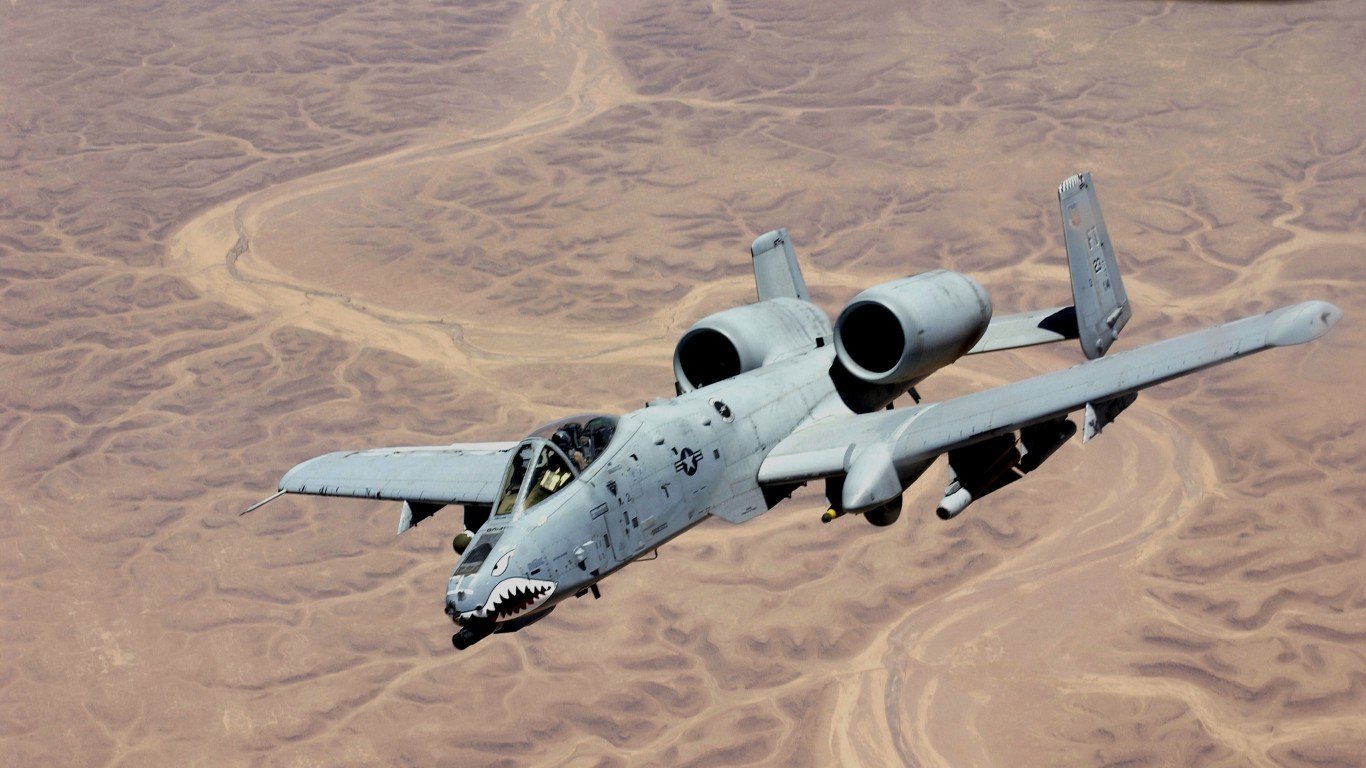
- Type: Close-air support / forward air control
- Year introduced: 1976
- Active aircraft: 234
- Top speed: 439 mph
- Armament: 30mm GAU-8/A gatling gun, Maverick missiles, Sidewinder missiles, rocket pods, drop bombs, cluster bombs, Paveway bombs
Nearly 50 Years in Service
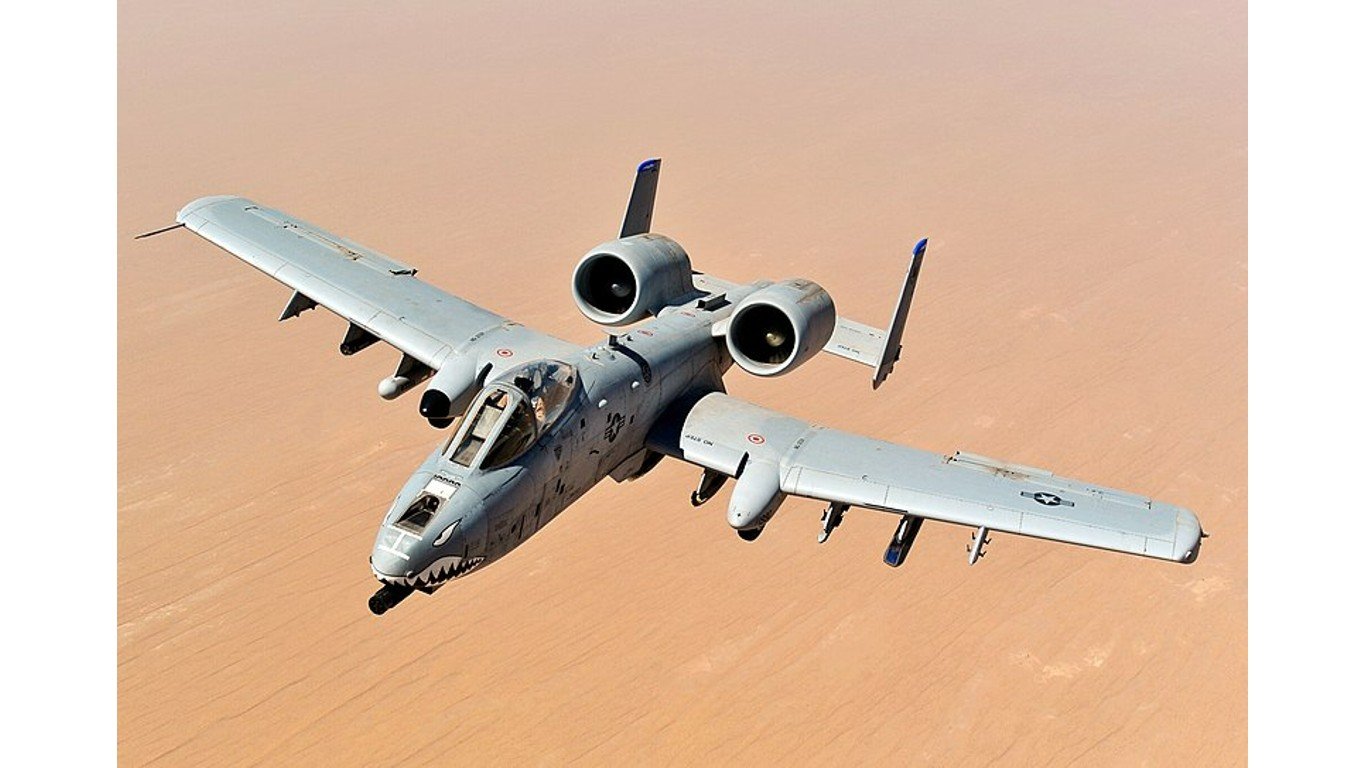
The A-10C Thunderbolt II, developed and manufactured by Fairchild Republic, may seem simple — but it can pack a pretty powerful punch. Armed with a gatling gun that can fire up to 3,900 rounds per minute, the A-10C is especially effective in attacks against light maritime attack aircraft and ground targets. Known for its toughness, the aircraft has earned its nickname as the “Warthog.” One fascinating aspect about the A-10 is its “titanium bathtub” cockpit, which provides the pilot with protection from ground fire. The plane is also equipped with Night Vision Imaging Systems.
2. UH-1N Twin Huey
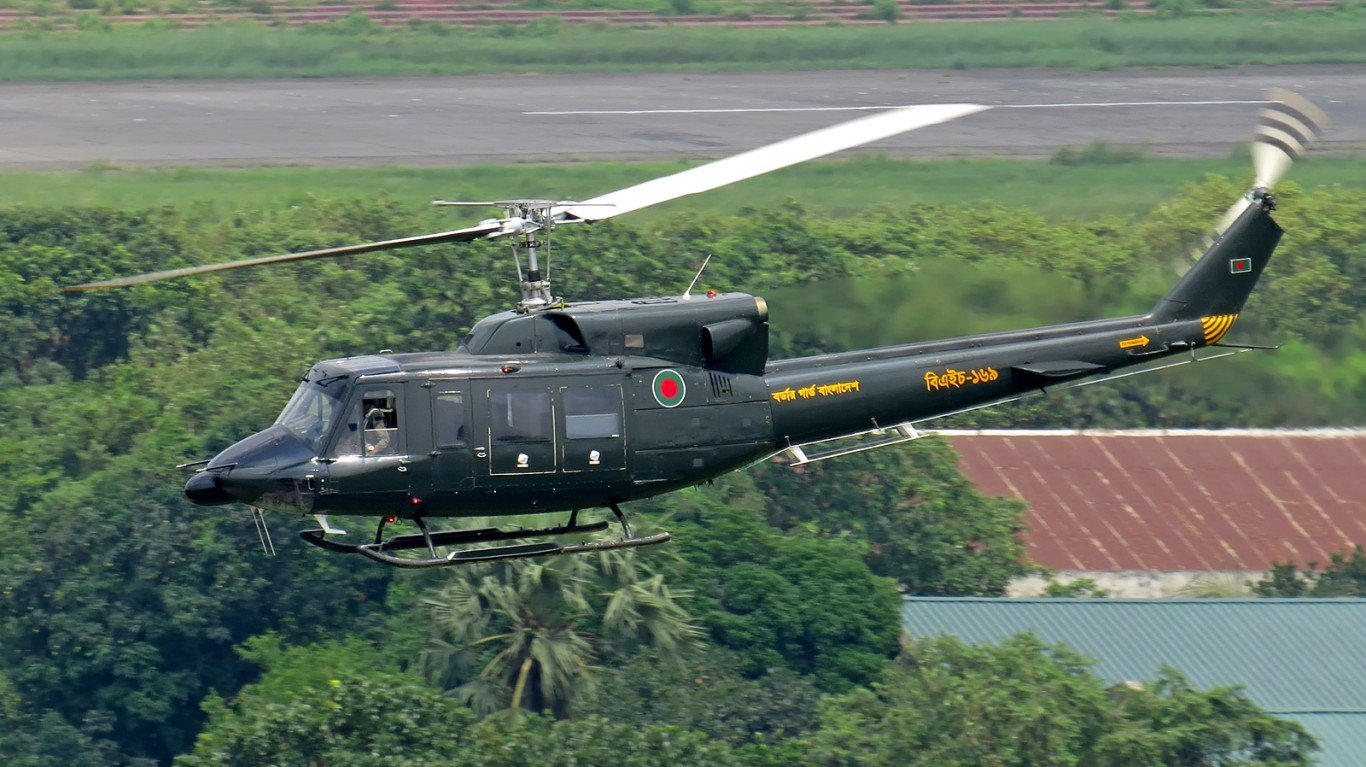
- Type: Multi-role utility helicopter
- Year introduced: 1970
- Active aircraft: 64
- Top speed: 150 mph
- Armament: 12.7mm GAU-16 machine gun, 7.62mm machine guns, 70mm rocket pods
Two Engines

Why is this combat helicopter from Bell Helicopter known as the Twin Huey? It all comes down to the engines: unlike its predecessor, the UH-1N Twin Huey has two engines. There have been many variations of this helicopter that span numerous roles, but this aircraft is typically used in combat. Other notable variants are the UH-1 Iroquois, UH-1Y Venom, and AH-1 Cobra. The UH-1N Twin Huey has seen many combat scenarios, including the Vietnam War and the 2003 Iraq invasion.
1. B-52H Stratofortress
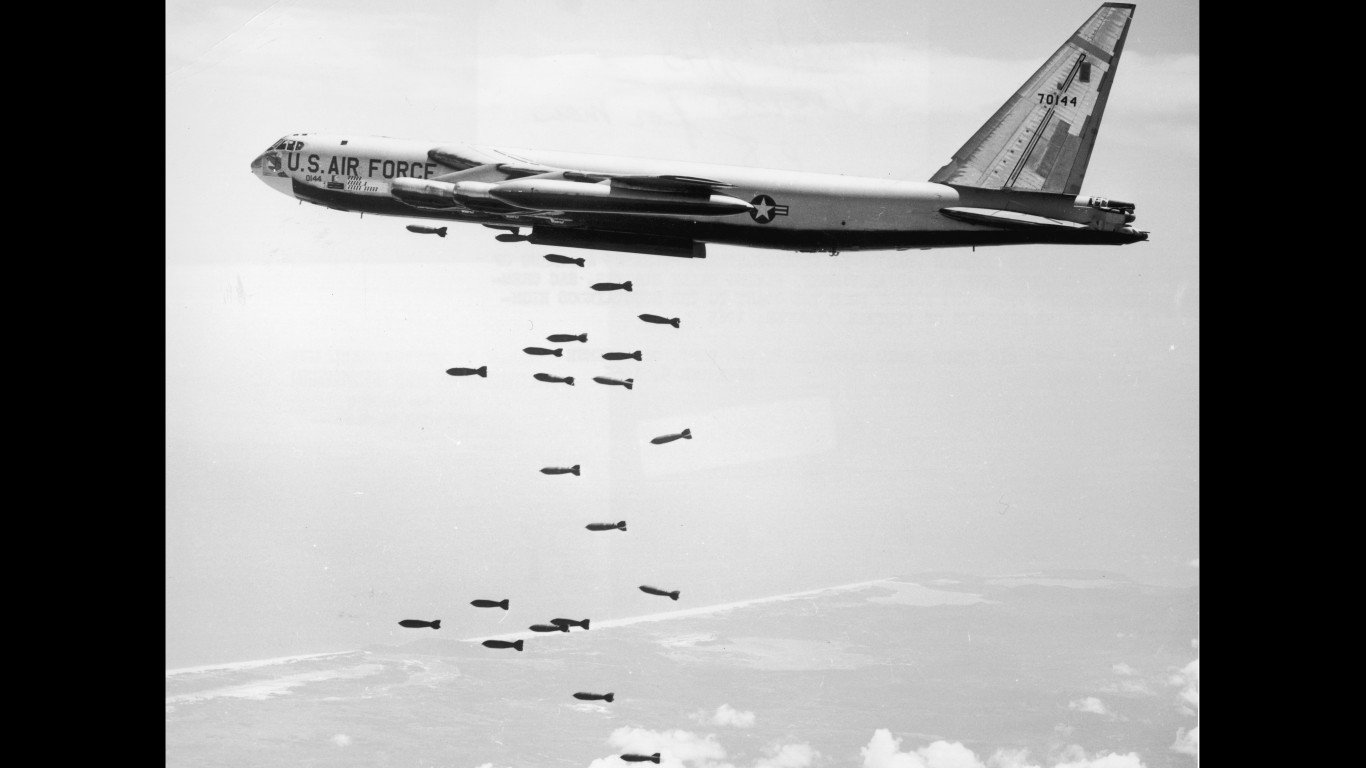
- Type: Long range strategic heavy bomber
- Year introduced: 1955
- Active aircraft: 72
- Top speed: 595 mph
- Armament: ACLM cruise missiles, Harpoon missiles, CALCM cruise missiles, joint direct attack munitions, freefall nuclear bombs
70 Years of Service
The B-52 is one of the longest serving aircraft in the U.S. Air Force, introduced in 1955. It was originally developed in the post-World War II years to succeed the B-29 Superfortress, which dropped the bomb on Japan. The B-52s were designed to carry larger payloads than the B-29, including nuclear weapons. The Stratofortress acted as a strong nuclear deterrent throughout the Cold War as well. Outside of its use in the U.S. Air Force, the B-52 Stratofortress has also been used by NASA.
The post Will This Combat Aircraft Make It to a Century of Service? appeared first on 24/7 Wall St..






















